I'll ensure each section represents a complete themed design concept and varies the opening sentences as instructed.Rustic landscaping embraces the natural beauty of the countryside, creating outdoor spaces that feel authentically connected to the environment. This design approach celebrates imperfection, weathered materials, and organic forms that have been shaped by time and nature. By incorporating elements like reclaimed wood, natural stone, wildflower meadows, and vintage-inspired features, rustic landscapes offer a refreshing alternative to manicured formal gardens. These designs prioritize sustainability, low-maintenance plants, and creating habitats for local wildlife. Whether you're working with a sprawling country property or a modest suburban yard, rustic landscaping principles can transform any space into a charming retreat that feels both timeless and effortlessly beautiful.
1. Rustic Landscaping with Wildflower Meadow Gardens
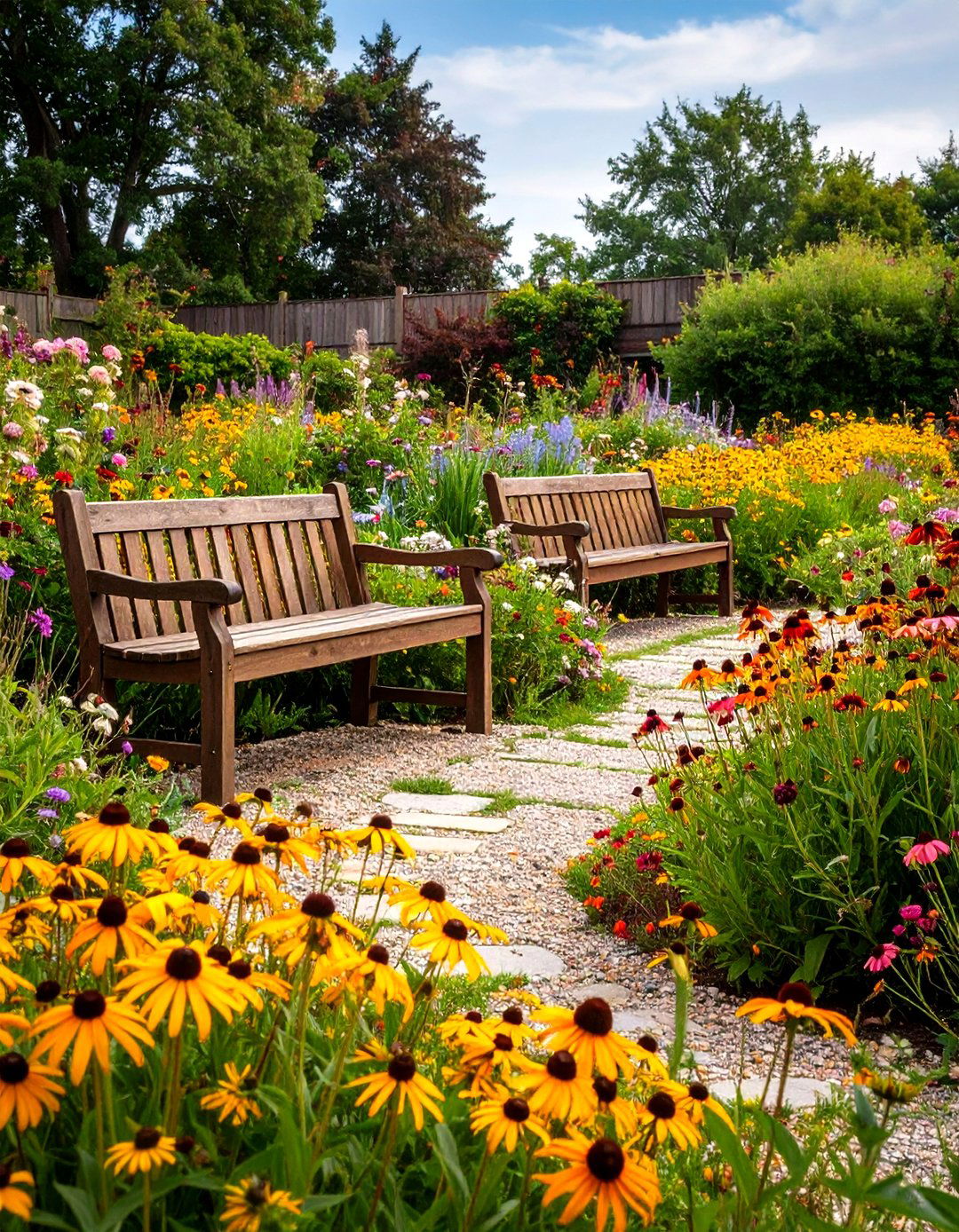
Transform your landscape into a vibrant tapestry of native blooms with wildflower meadow rustic landscaping. This approach mimics natural meadows by combining regionally appropriate wildflowers like coneflowers, black-eyed Susans, and native grasses in flowing, organic patterns. The key lies in selecting species that thrive in your climate while supporting local pollinators and wildlife. Start by removing invasive plants and enriching the soil with compost, then scatter seed mixes designed for your specific region. Meandering gravel pathways wind through the meadow, allowing for exploration while maintaining the natural aesthetic. Weathered wooden benches positioned strategically throughout provide resting spots to enjoy the ever-changing seasonal display, from spring's tender greens to autumn's golden seed heads.
2. Rustic Landscaping featuring Reclaimed Wood Fence Boundaries
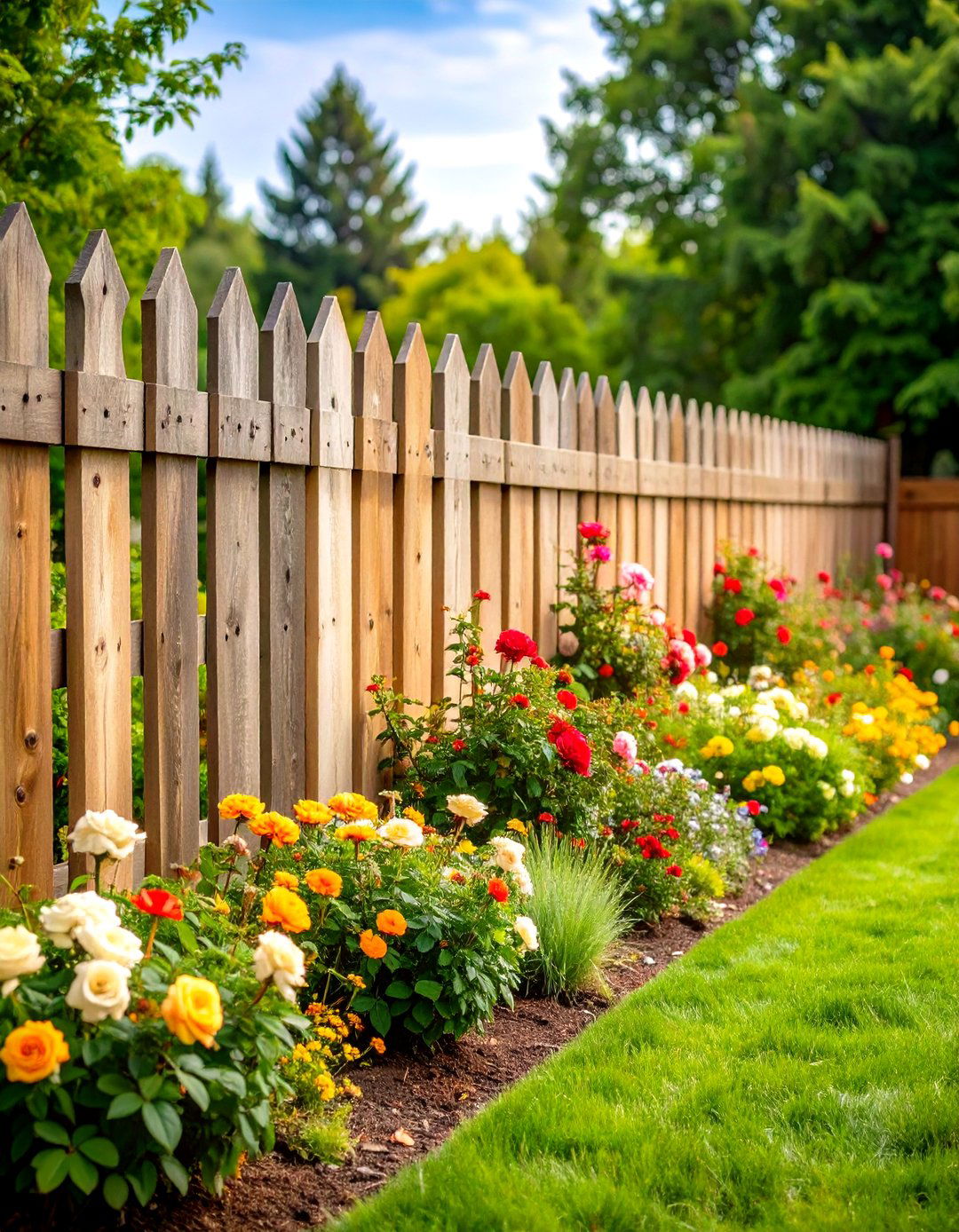
Create defined spaces with reclaimed barn wood rustic landscaping that tells a story through weathered materials. Salvaged timber from old barns, factories, and demolished structures brings instant character with its natural patina, nail holes, and unique grain patterns. Mount these planks vertically or horizontally between sturdy posts, mixing different widths and lengths for visual interest. The fence serves as both boundary and backdrop for climbing roses, morning glories, or wild grapevines that soften the structure over time. Complement the fence with native plantings at its base, using drought-tolerant perennials and ornamental grasses that echo the countryside aesthetic. This sustainable approach reduces waste while creating an authentic farmhouse feel that improves with age.
3. Rustic Landscaping with Natural Stone Fire Pit Gathering Areas
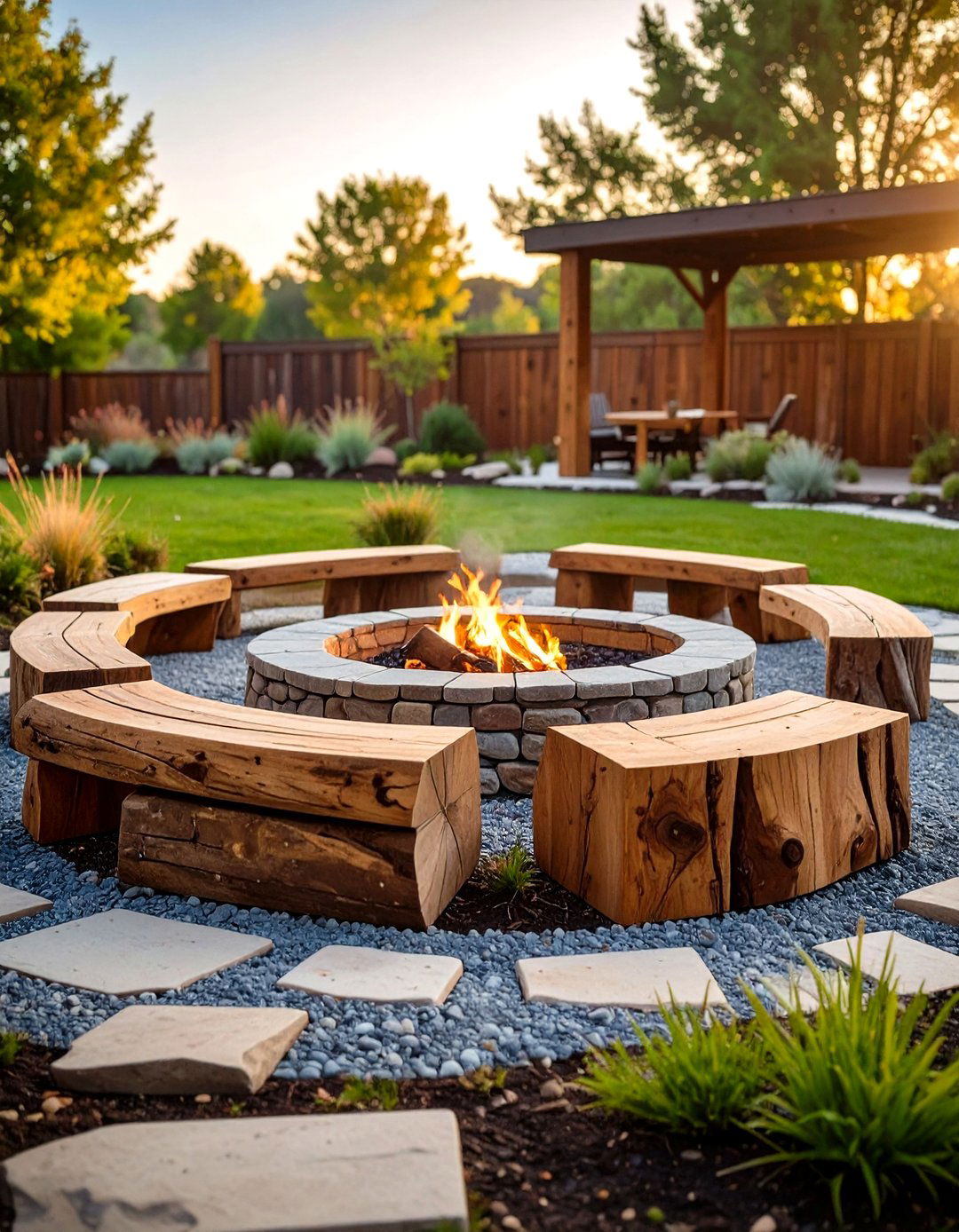
Envision cozy evenings around a natural stone fire pit in this rustic landscaping design that centers on outdoor gathering. Build the fire pit using locally sourced fieldstone or river rock, creating an organic circular or square shape that blends seamlessly with the surrounding landscape. Position weathered log seating, large flat boulders, or handcrafted wooden benches around the fire pit in an informal arrangement that encourages conversation. Surround the area with drought-tolerant native plants like lavender, sage, or ornamental grasses that provide texture without requiring excessive maintenance. Gravel pathways lead to the fire pit from various points in the yard, while solar-powered lanterns or string lights hung from nearby trees create magical ambiance for evening gatherings.
4. Rustic Landscaping incorporating Raised Garden Beds with Split-Rail Details

Practical meets beautiful in this rustic landscaping approach featuring raised beds constructed from split rails and reclaimed lumber. Build rectangular or curved raised beds using cedar or locust split rails for the borders, creating a classic farmhouse aesthetic that's both functional and attractive. Fill the beds with rich compost and native soil, then plant with a mixture of herbs, vegetables, and cottage garden flowers like sunflowers, zinnias, and marigolds. Intersperse the productive beds with ornamental native plants and create mulched pathways between them using wood chips or pine straw. Add trellises made from branches or bamboo to support climbing crops like beans, peas, and cucumbers, creating vertical interest while maximizing growing space in this practical yet charming design.
5. Rustic Landscaping with Natural Pond and Stream Features
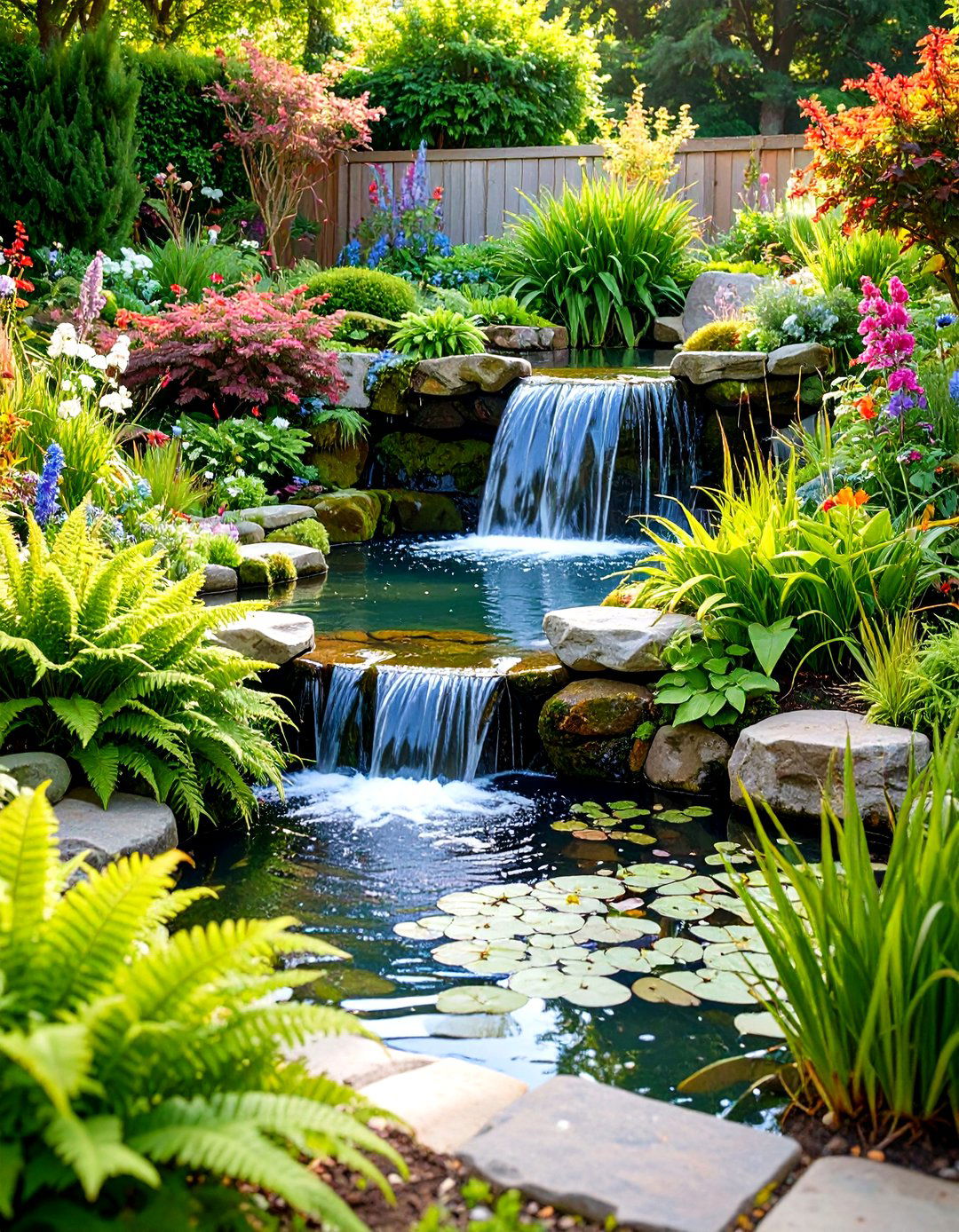
Bring the soothing sounds of water into your landscape with rustic pond and stream features that mimic natural waterways. Excavate irregular, organic-shaped ponds lined with natural stone and filled with native aquatic plants like water lilies, cattails, and arrowhead. Create a meandering stream bed using river rocks of various sizes, from large boulders to small pebbles, allowing water to cascade naturally between different levels. Surround the water features with moisture-loving native plants such as ferns, astilbe, and native irises that thrive in boggy conditions. Incorporate fallen logs or large stones as natural seating areas where you can observe wildlife like frogs, dragonflies, and birds that are drawn to the water source.
6. Rustic Landscaping featuring Cottage Garden Border Designs
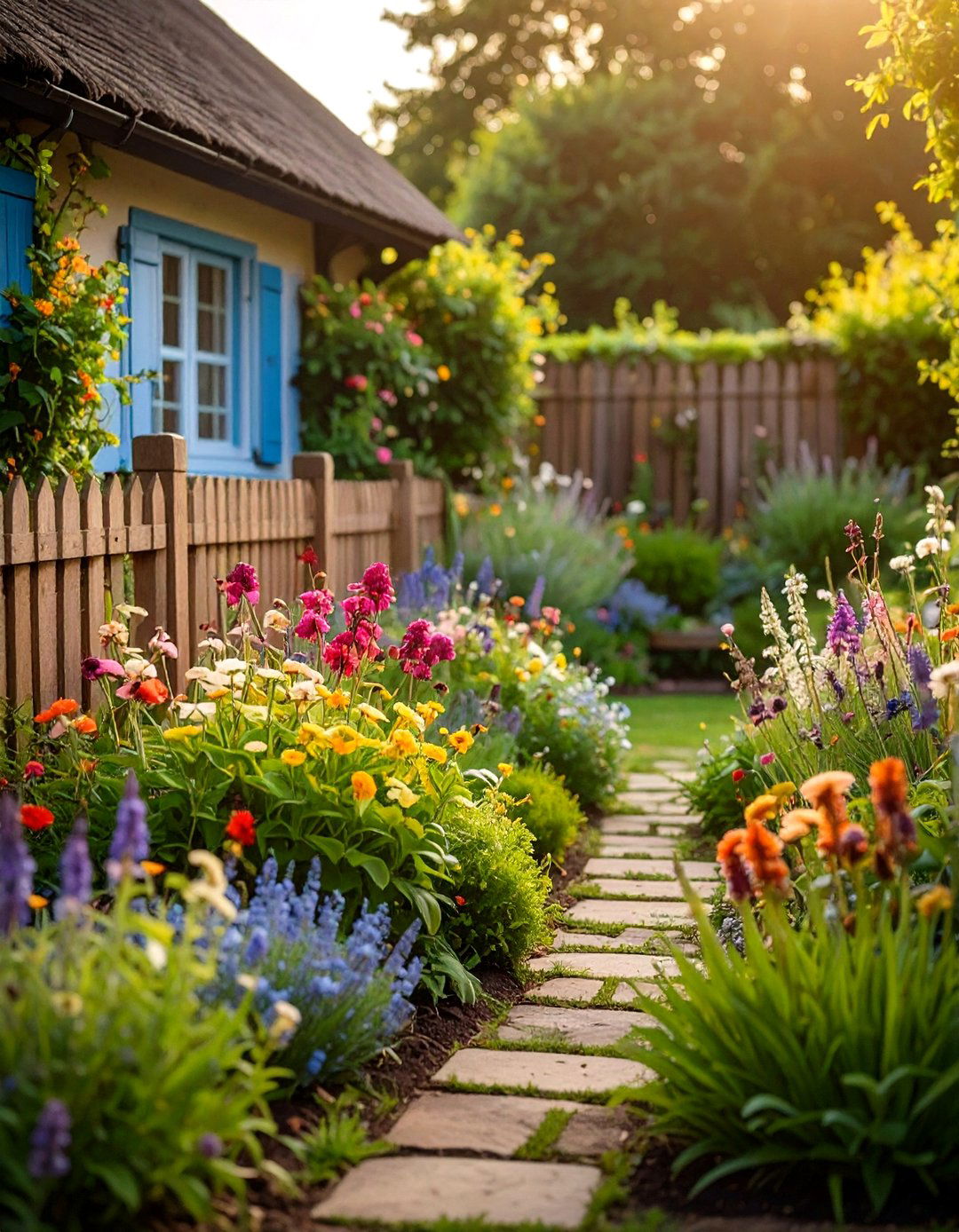
Capture the romance of English countryside with cottage garden rustic landscaping that combines informal plantings with weathered charm. Layer plants at different heights, mixing perennials like delphiniums and hollyhocks with self-seeding annuals such as cosmos, sweet alyssum, and calendula. Allow plants to spill naturally over pathway edges and intermingle freely, creating the slightly disheveled look that defines cottage gardens. Incorporate fragrant herbs like rosemary, thyme, and lavender throughout the borders, providing both sensory appeal and practical harvest opportunities. Define the garden beds with low picket fencing, woven willow borders, or simply let plants flow into surrounding lawn areas. Add vintage-inspired elements like weathered garden gates, old watering cans as planters, or antique garden tools displayed as decorative features.
7. Rustic Landscaping with Gravel Pathway and Boulder Accent Systems

Design functional circulation through your landscape using natural gravel pathways and strategic boulder placement in this rustic landscaping concept. Create meandering walkways using locally sourced gravel or decomposed granite that allows for natural drainage while providing stable footing. Incorporate large boulders as both functional seating and artistic focal points, choosing stones with interesting textures, colors, or shapes that complement your regional geology. Line the pathways with drought-tolerant native plants like ornamental grasses, sedums, or regional wildflowers that soften the hard edges while requiring minimal maintenance. Use smaller accent stones to create natural borders between different landscape zones, and consider adding stepping stones across planted areas to provide access for maintenance while preserving the informal, unstructured feel characteristic of rustic design.
8. Rustic Landscaping incorporating Native Tree Grove Sanctuaries
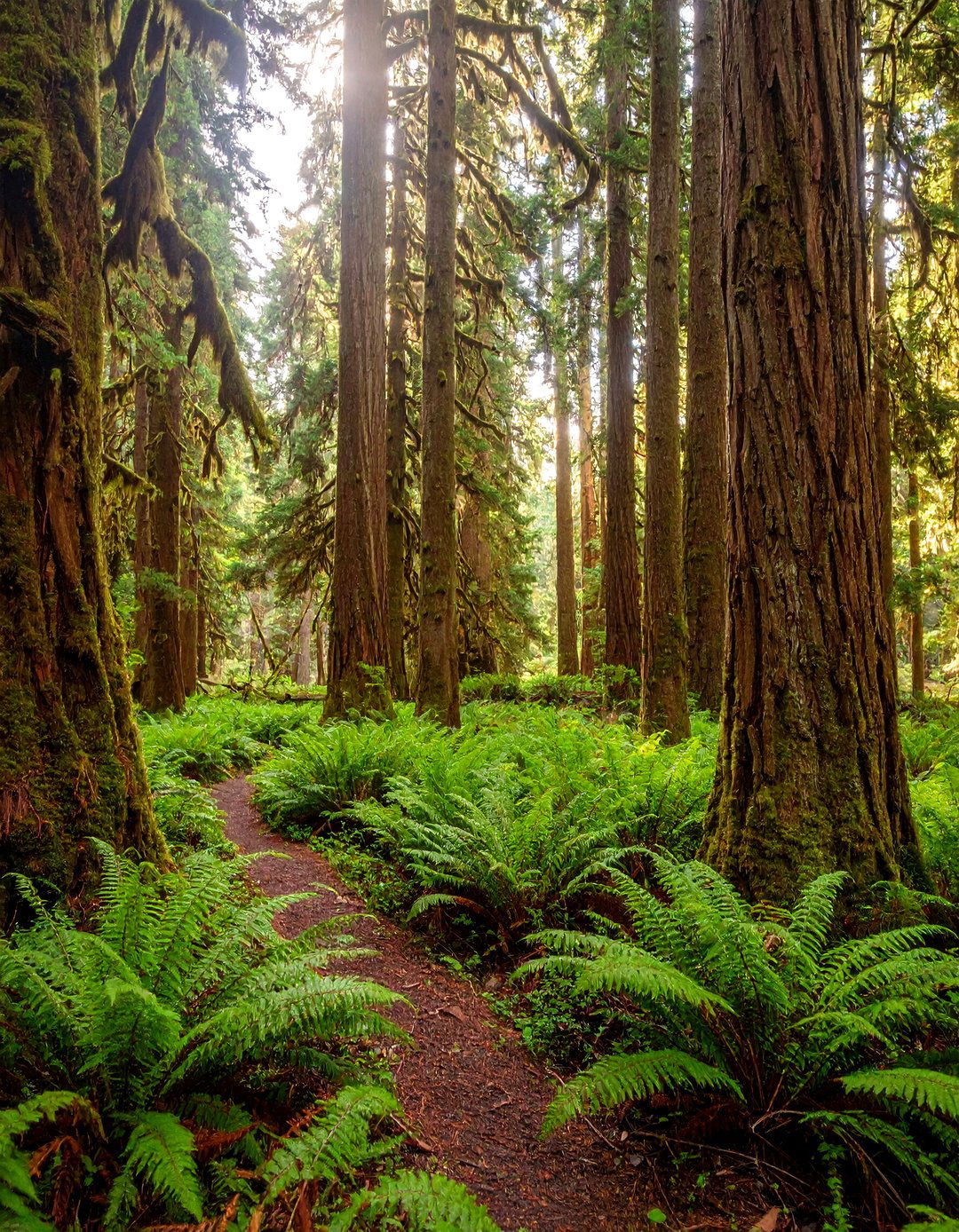
Establish peaceful retreats within your landscape by creating native tree grove rustic landscaping that celebrates regional forest ecosystems. Select indigenous tree species like oaks, maples, or pines that naturally occur in your area, planting them in informal clusters that mimic natural forest patterns. Underplant the grove with shade-tolerant native species such as wild ginger, trillium, or native ferns that create layers of texture and seasonal interest. Clear informal pathways through the grove using wood chips or pine needles, and position rustic seating like split-log benches or flat stone slabs in clearings where dappled sunlight filters through the canopy. Allow fallen leaves to remain as natural mulch, creating habitat for beneficial insects while reducing maintenance requirements and supporting the woodland ecosystem you're cultivating.
9. Rustic Landscaping with Weathered Pergola and Climbing Vine Features
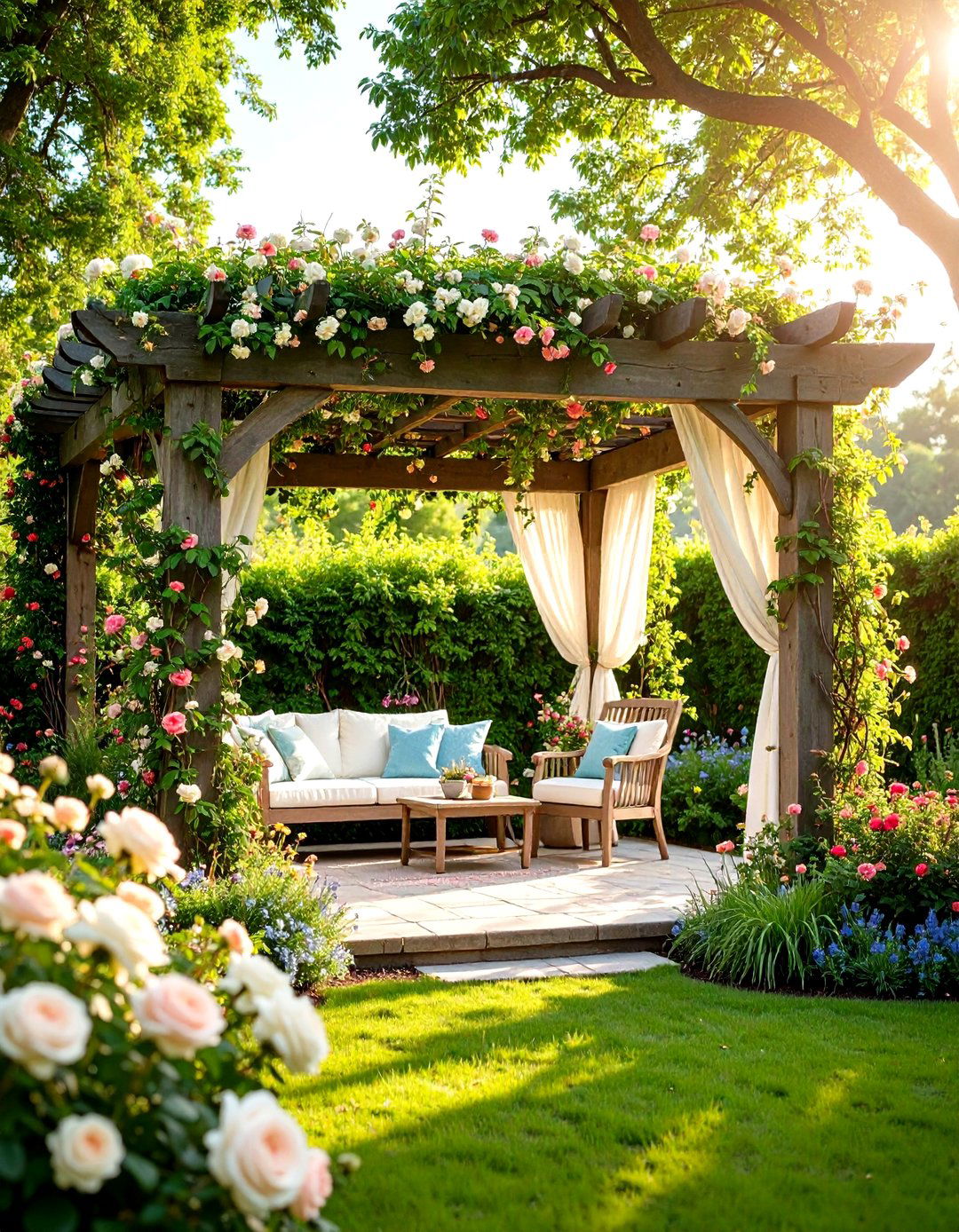
Create vertical interest and intimate outdoor rooms using weathered wood pergola rustic landscaping that supports vigorous climbing plants. Construct pergolas from naturally aged cedar or reclaimed timber, allowing the wood's natural weathering to provide authentic character that improves over time. Train climbing roses, wild grapes, or native honeysuckle over the structure, creating living canopies that provide seasonal shade and fragrance. Position the pergola over outdoor seating areas, dining spaces, or along pathway transitions to define different landscape zones. Surround the base with informal plantings of native perennials and ornamental grasses that complement the climbing plants above. Add string lights or hanging lanterns for evening ambiance, and consider incorporating hanging planters with trailing native plants like wild strawberry or native mint varieties.
10. Rustic Landscaping featuring Dry Creek Bed Drainage Solutions
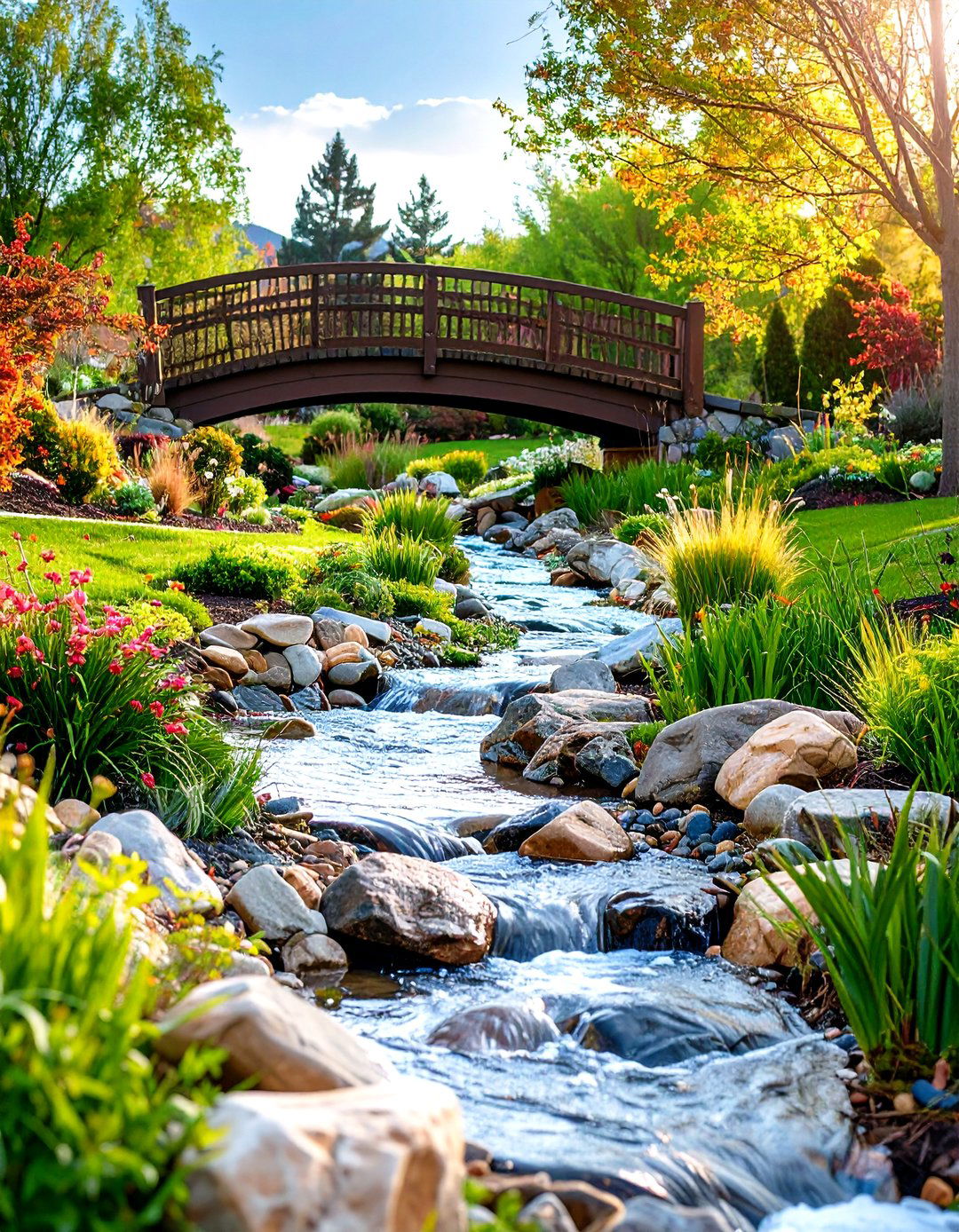
Address drainage challenges beautifully with dry creek bed rustic landscaping that channels water naturally while adding textural interest. Design meandering channels using river rocks, fieldstone, and native boulders to create the appearance of natural waterways that activate during rain events. Vary stone sizes from large anchor boulders to small pebbles, creating realistic stream bed textures that look authentic even when dry. Plant the creek bed edges with native grasses, sedges, and water-tolerant perennials that would naturally occur along stream banks in your region. Bridge the creek bed with flat stone slabs or weathered wooden planks to maintain pathway connections, and consider adding occasional pools lined with smaller stones where water would naturally collect, creating microclimates for specialized native plants.
11. Rustic Landscaping with Reclaimed Wood Planter and Raised Bed Gardens
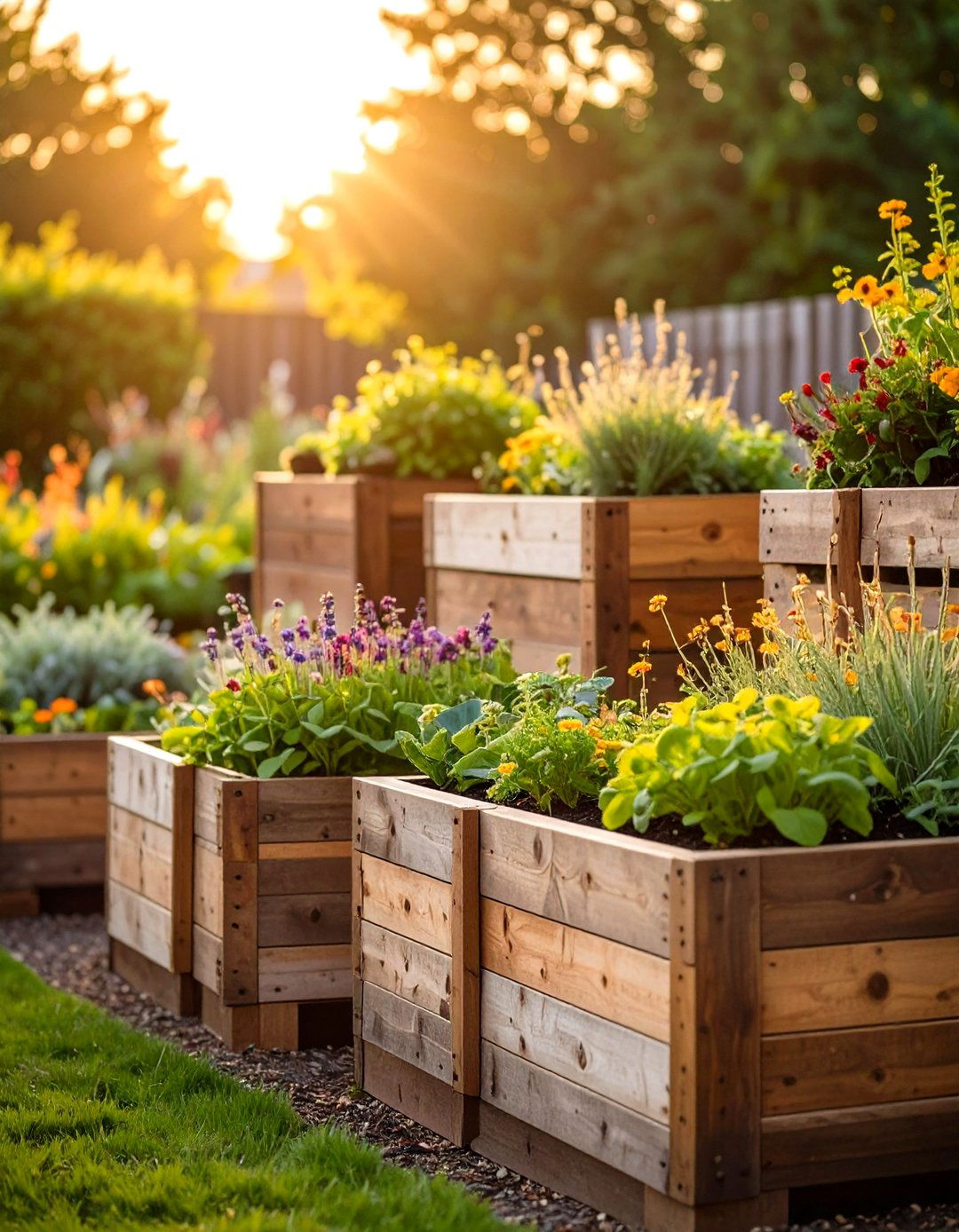
Maximize growing space while adding vertical interest through reclaimed wood planter rustic landscaping that repurposes vintage materials. Construct planters from weathered barn siding, old pallets, or salvaged lumber, creating containers of varying heights and sizes for different plant types. Fill planters with herbs, vegetables, and cutting flowers, positioning them strategically throughout the landscape to create productive focal points. Use taller planters for privacy screening or to define outdoor room boundaries, while shorter versions serve as transitional elements between different landscape zones. Surround the planters with native groundcovers and ornamental grasses, and connect them with gravel or mulched pathways that maintain the informal rustic aesthetic while providing practical access for maintenance and harvest.
12. Rustic Landscaping incorporating Split-Rail and Wire Fence Livestock Aesthetics
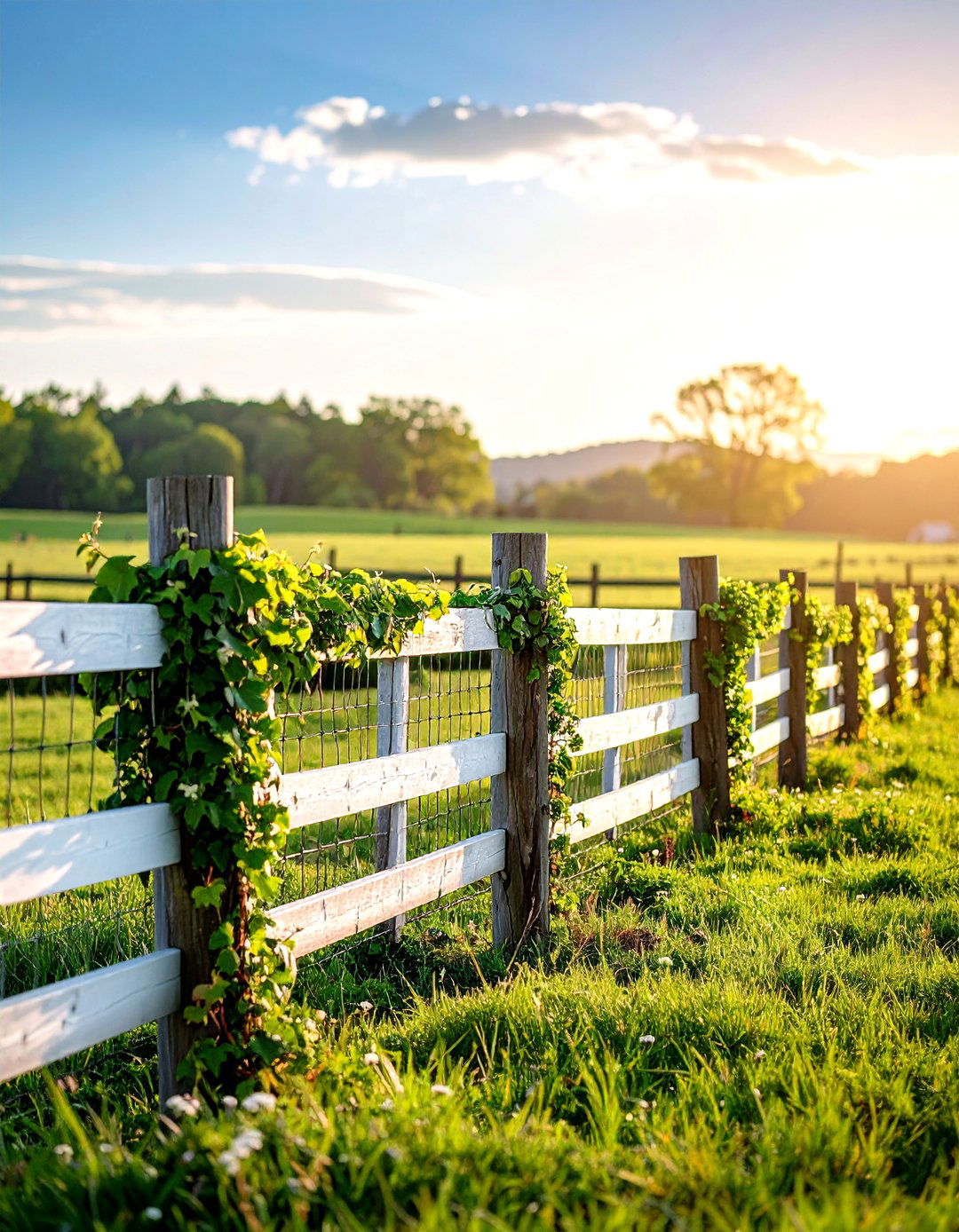
Embrace agricultural heritage with split-rail and wire fence rustic landscaping that evokes working farm traditions. Install classic split-rail fencing using cedar or locust posts and rails, adding wire mesh panels where needed for pet containment or garden protection. Allow the wood to weather naturally, developing the silvery-gray patina that characterizes aged fence materials. Plant climbing vines like wild roses, native honeysuckle, or grapevines along fence lines, creating living barriers that attract beneficial wildlife. Use the fence structure to support trellises for climbing vegetables or create backdrop plantings of tall native perennials and ornamental grasses. Add gates constructed from matching materials, incorporating antique hardware or hand-forged elements that enhance the authentic farmstead character of this practical yet attractive boundary system.
13. Rustic Landscaping with Natural Rock Wall Terracing Systems
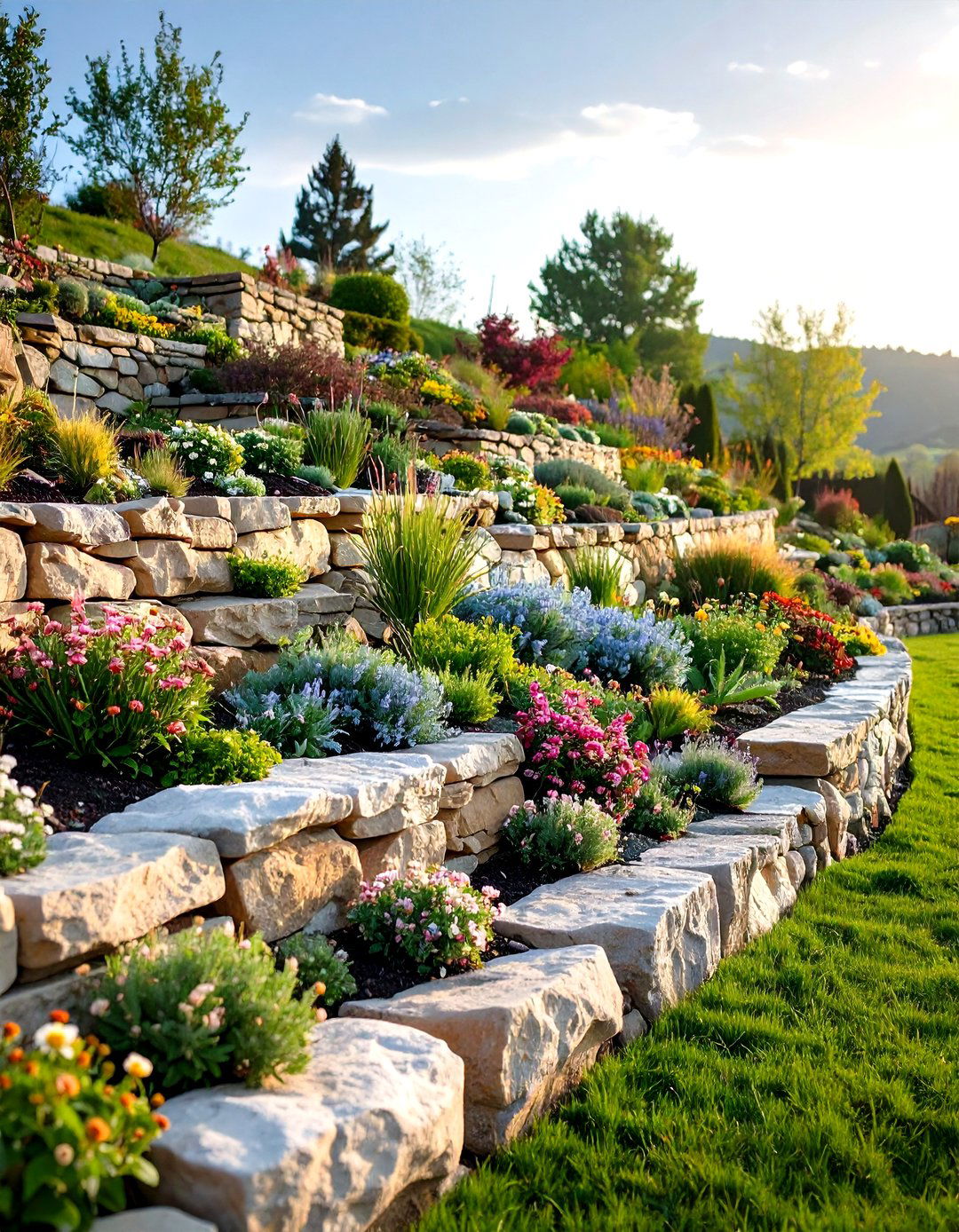
Manage slopes and create planting opportunities using natural rock wall rustic landscaping that builds with locally sourced stone materials. Construct dry-stacked stone walls using fieldstone or quarried rock that reflects your regional geology, creating terraced levels that prevent erosion while adding dramatic vertical elements. Select stones with varied shapes, sizes, and textures, fitting them together without mortar to allow for natural drainage and seasonal movement. Plant the terraces with drought-tolerant native species that thrive in well-drained conditions, such as sedums, native bunch grasses, and regional wildflowers. Allow small ferns, mosses, and creeping plants to establish in wall crevices naturally, creating the weathered appearance of ancient stonework that seems to have emerged from the landscape itself over centuries.
14. Rustic Landscaping featuring Herb Spiral and Kitchen Garden Integration
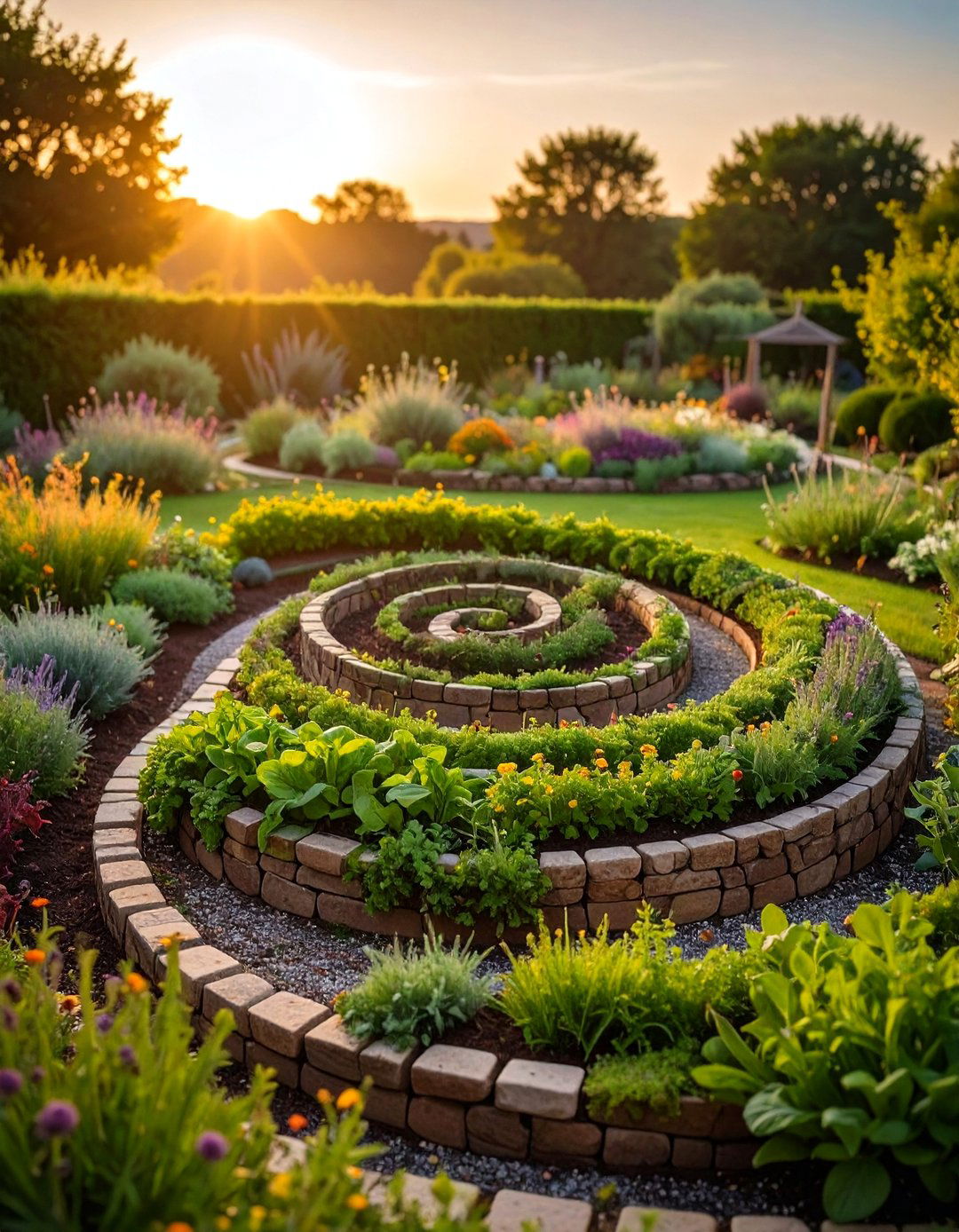
Combine function with beauty in herb spiral rustic landscaping that maximizes growing space through vertical gardening techniques. Build ascending spirals using natural stone or reclaimed brick, creating microclimates from the moist base to the well-drained peak that accommodate different herb preferences. Plant Mediterranean herbs like rosemary, thyme, and oregano at the spiral's sunny summit, while moisture-loving herbs like mint, parsley, and chives thrive in the lower, shadier sections. Connect the herb spiral to other kitchen garden elements like raised vegetable beds, berry patches, and cutting flower gardens using informal gravel pathways. Surround the productive areas with native ornamental plants that attract beneficial insects, creating an integrated ecosystem that supports both food production and local wildlife while maintaining the relaxed, unstructured aesthetic of rustic design.
15. Rustic Landscaping with Weathered Arbor and Entrance Gateway Features
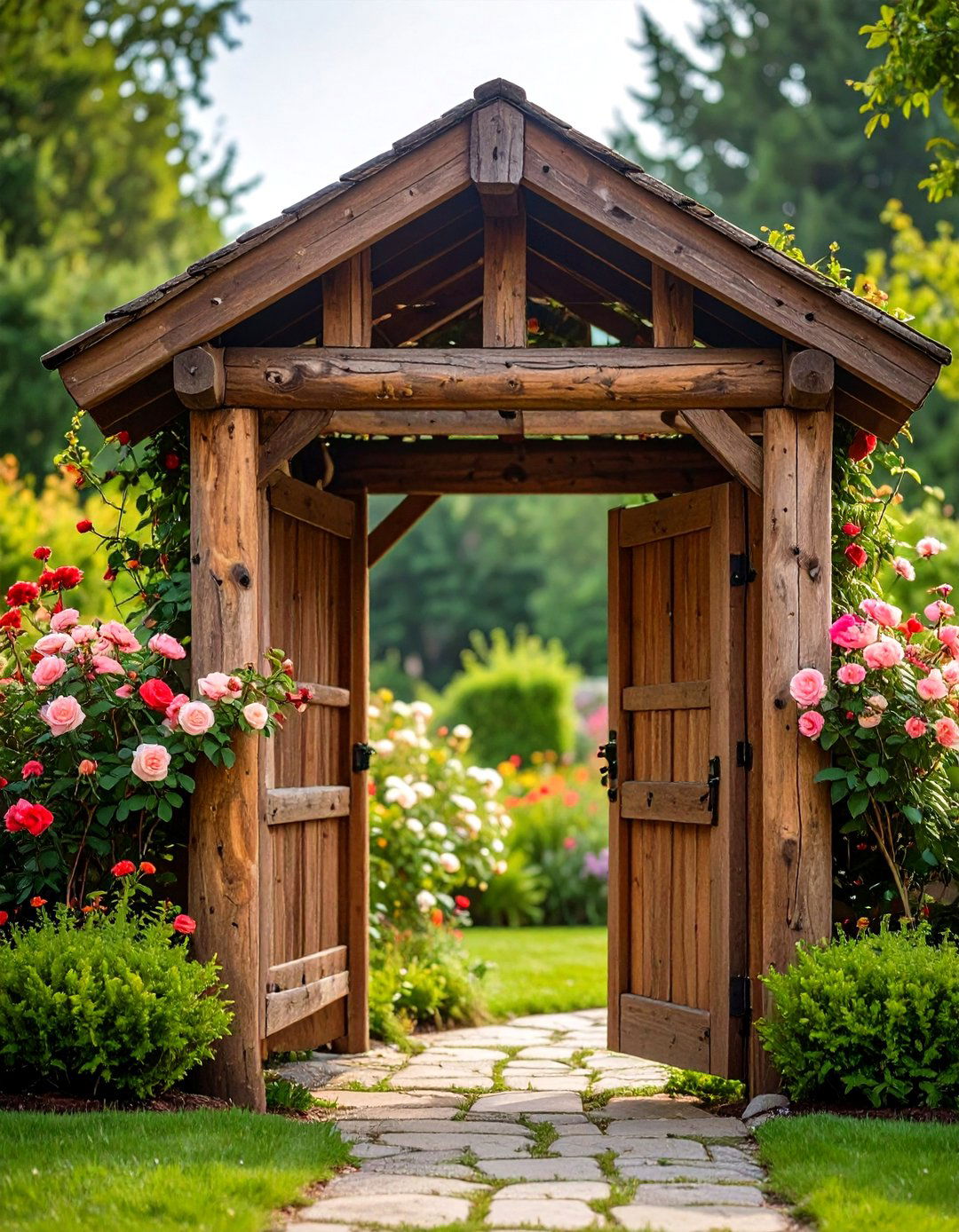
Welcome visitors with weathered arbor rustic landscaping that creates dramatic entrance experiences using natural materials. Construct arbors from peeled logs, reclaimed timbers, or naturally curved branches, designing arched or rectangular openings that frame views into garden spaces beyond. Train climbing roses, clematis, or native vines over the structure, creating seasonal displays that change throughout the growing year. Position arbors at pathway intersections, property entrances, or transitions between different landscape zones to provide sense of journey and discovery. Surround arbor bases with informal plantings of native perennials, ornamental grasses, and seasonal bulbs that naturalize over time. Add hand-forged hardware, vintage hinges, or wrought iron details that enhance the authentic character while ensuring structural stability for years of weathering and plant growth.
16. Rustic Landscaping incorporating Natural Swimming Pool and Beach Areas
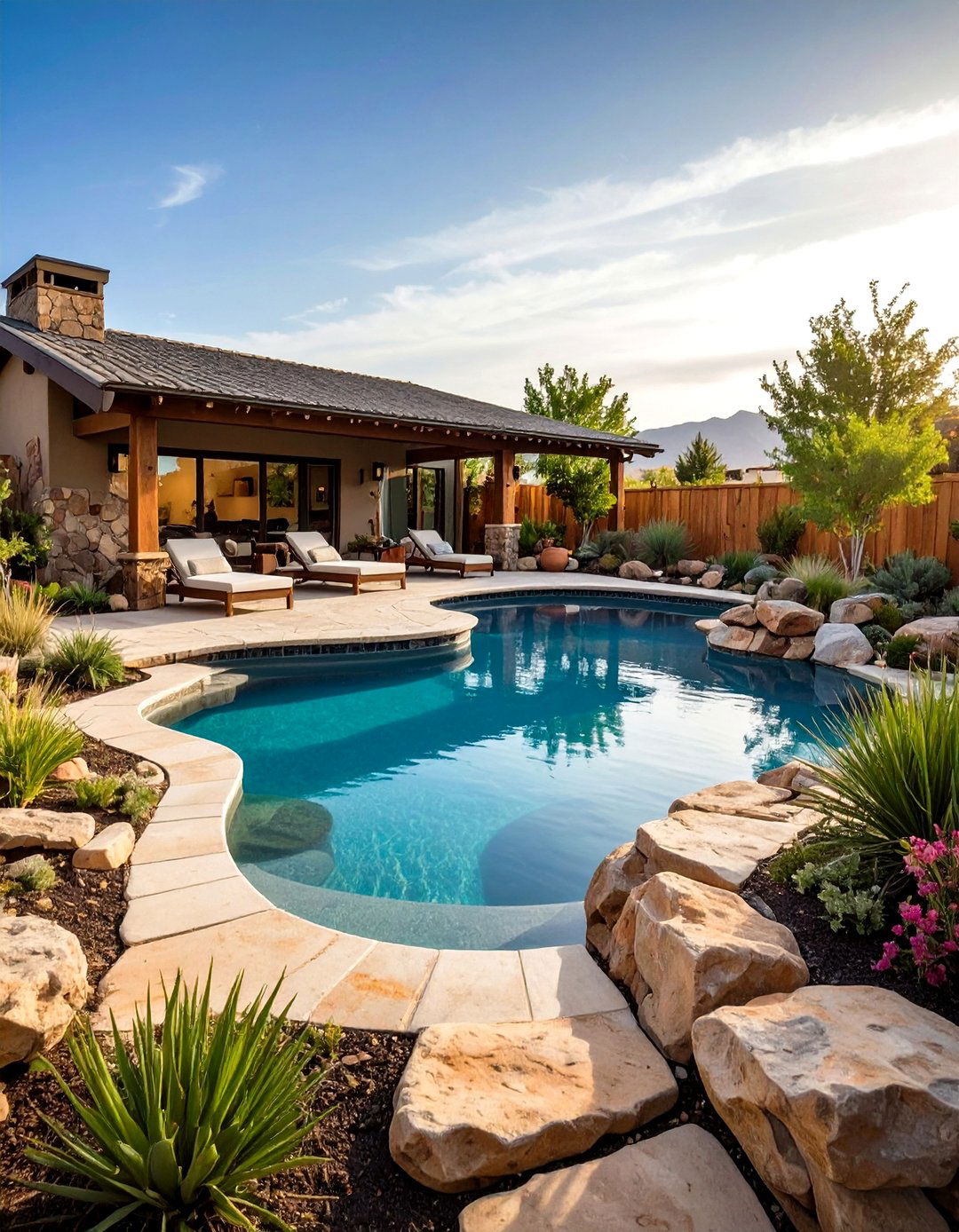
Create resort-like experiences at home with natural swimming pool rustic landscaping that mimics mountain lakes and swimming holes. Design irregular pool shapes using natural stone coping and integrate biological filtration systems planted with native aquatic species that maintain water quality naturally. Construct beach entries using smooth river rocks and sand, creating gradual transitions from deck areas to swimming zones. Surround the pool with native plantings that would naturally occur near water sources, including ferns, native grasses, and moisture-tolerant perennials. Add boulders for diving platforms and natural seating, and consider incorporating waterfalls or streams that feed the pool using recirculating pumps hidden within rock formations. Complete the natural aesthetic with weathered wooden decking, rustic changing areas, and outdoor showers constructed from reclaimed materials.
17. Rustic Landscaping with Vintage Tool and Antique Garden Decoration
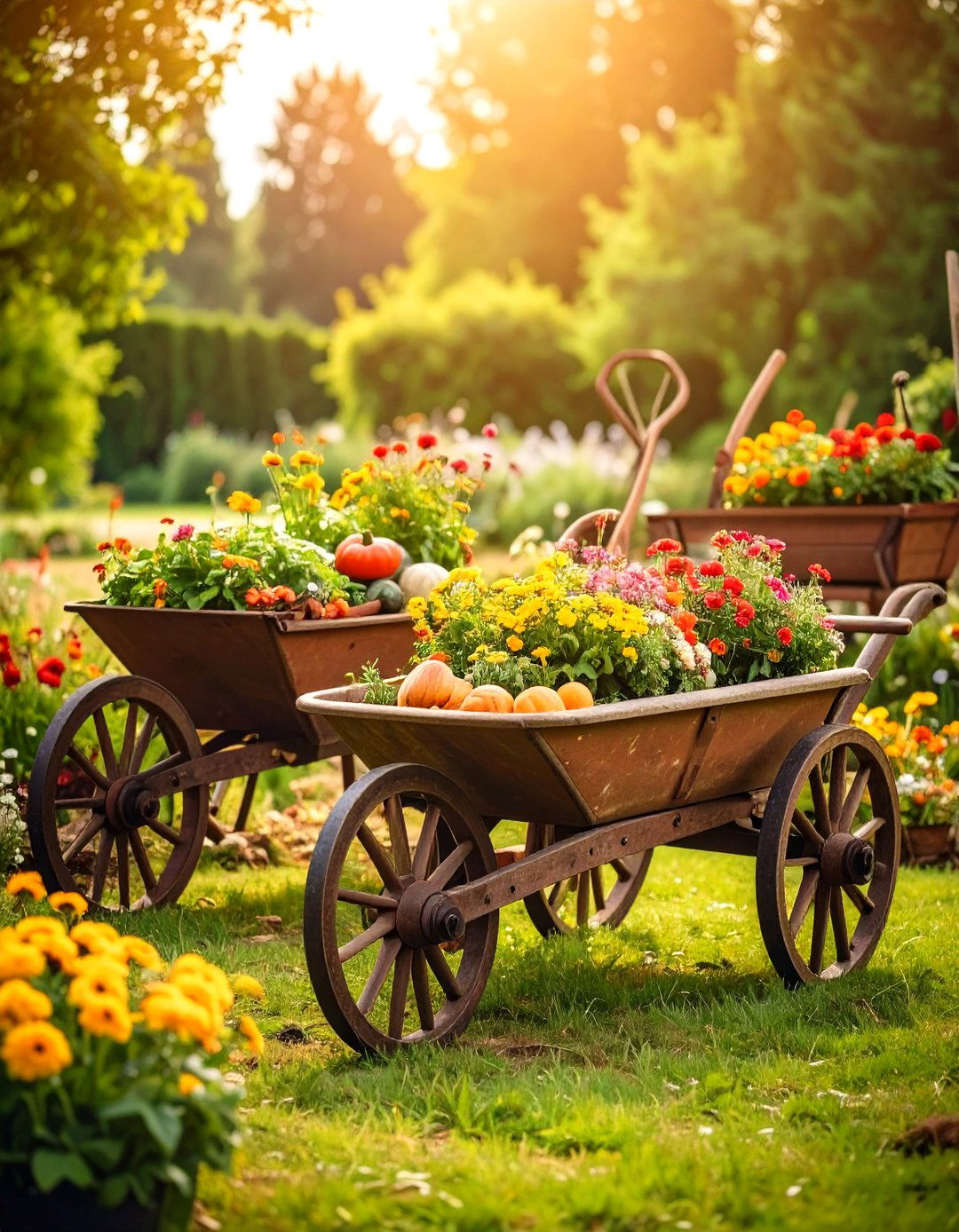
Celebrate agricultural heritage through vintage tool rustic landscaping that incorporates antique farm implements as decorative and functional elements. Display old plows, cultivators, and hand tools as garden sculptures, allowing them to develop attractive rust patinas while serving as conversation pieces and historical reminders. Use vintage wheelbarrows, milk cans, and wooden crates as unique planters for herbs, flowers, and vegetables, positioning them throughout the landscape as mobile focal points. Repurpose old gates, fence sections, and farm structures as garden dividers, trellises, or backdrop elements that add vertical interest and authentic character. Combine these antique elements with informal plantings of heirloom vegetables, heritage roses, and native wildflowers that complement the historical theme while creating productive and beautiful landscape spaces.
18. Rustic Landscaping featuring Moss Garden and Shade Sanctuary Designs
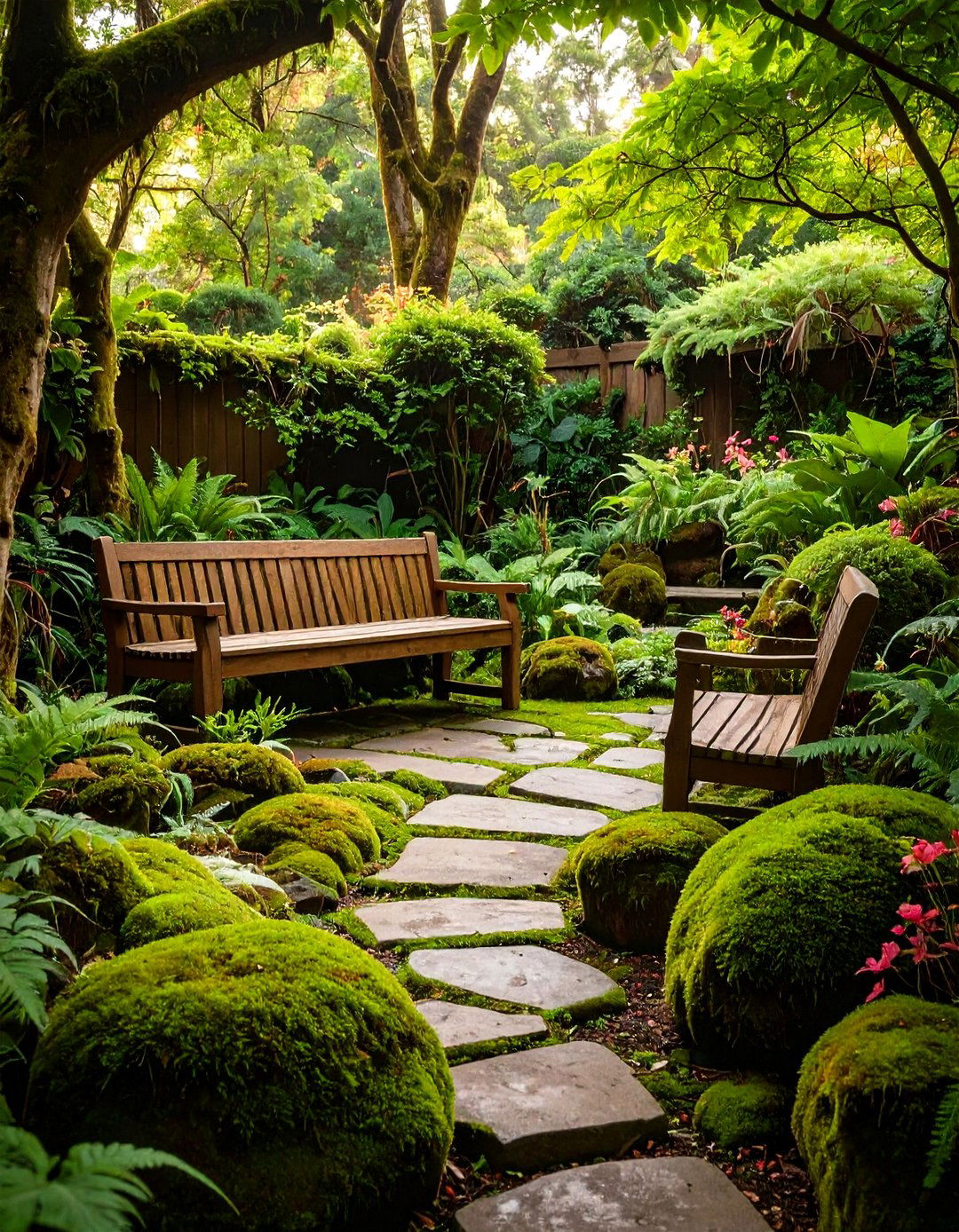
Transform challenging shaded areas into serene retreats with moss garden rustic landscaping that celebrates subtle textures and muted colors. Encourage native moss species to establish on rocks, logs, and bare soil areas by maintaining consistent moisture and removing competing weeds that might disrupt their growth. Combine different moss varieties with shade-tolerant native ferns, wild gingers, and woodland wildflowers that create layered textures without overwhelming the peaceful aesthetic. Add weathered stone paths, fallen log seating, and naturally occurring water features like small springs or seeps that support the moisture-loving plants. Create contemplative spaces with simple wooden benches or flat stones positioned where filtered light creates interesting patterns, and maintain the area's tranquil character by limiting foot traffic and allowing natural succession to occur gradually over time.
19. Rustic Landscaping with Orchard and Food Forest Integration
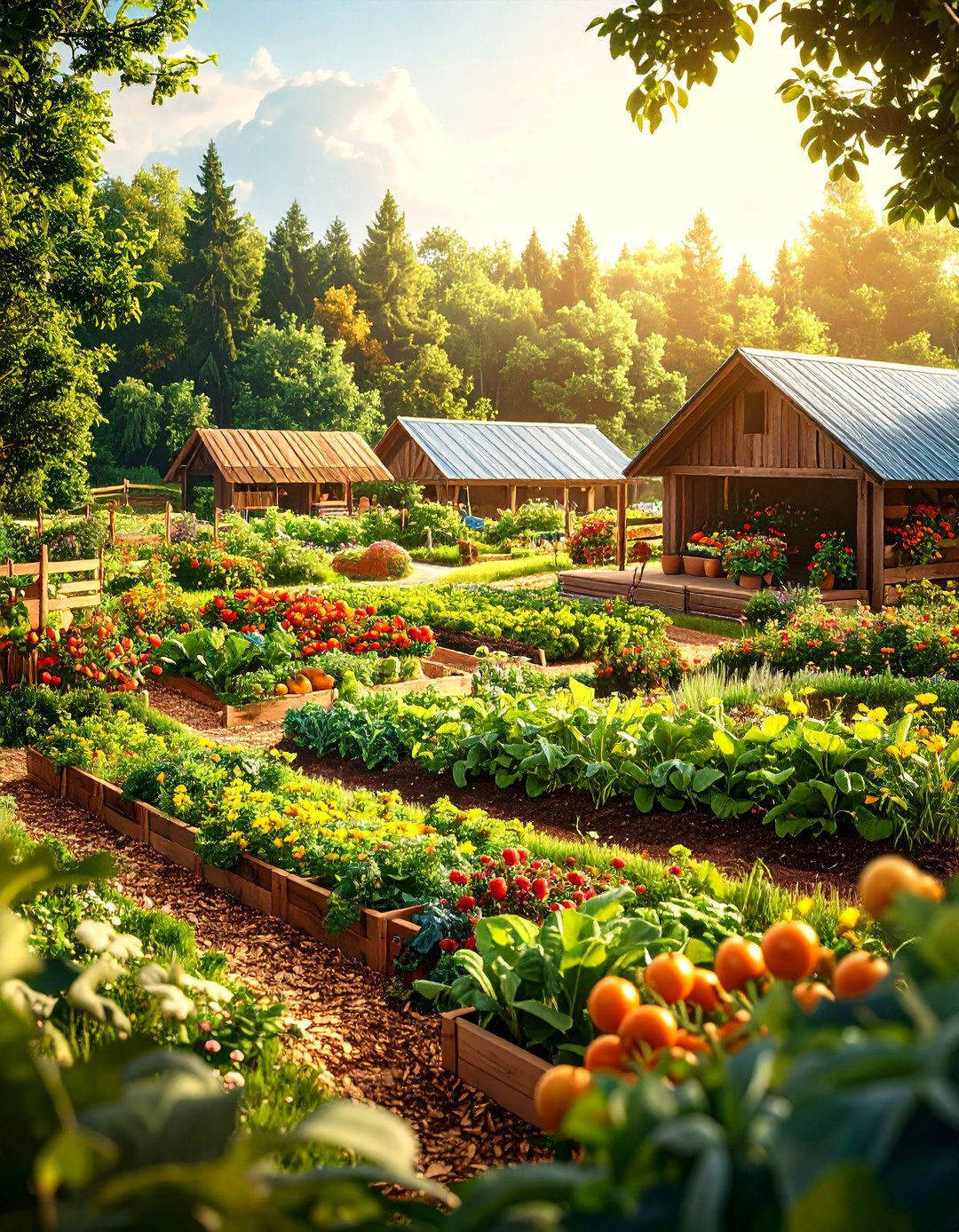
Develop productive landscapes using orchard and food forest rustic landscaping that mimics natural woodland ecosystems while producing edible harvests. Plant heritage fruit trees in informal groves, underplanting with berry bushes, edible groundcovers, and beneficial habitat plants that create multiple production layers. Include nut trees, native fruit species, and forage plants that would naturally occur in your region, creating diverse food sources for both humans and wildlife. Connect different orchard areas with mowed grass paths or wood chip trails that allow for easy harvesting and maintenance access. Add rustic structures like split-rail fencing for deer protection, weathered wooden ladders for harvest assistance, and simple storage sheds constructed from reclaimed materials. Incorporate bee houses, bird nesting boxes, and butterfly gardens that support the pollinators essential for fruit production while maintaining the naturalistic aesthetic.
20. Rustic Landscaping incorporating Seasonal Cutting Garden and Flower Production
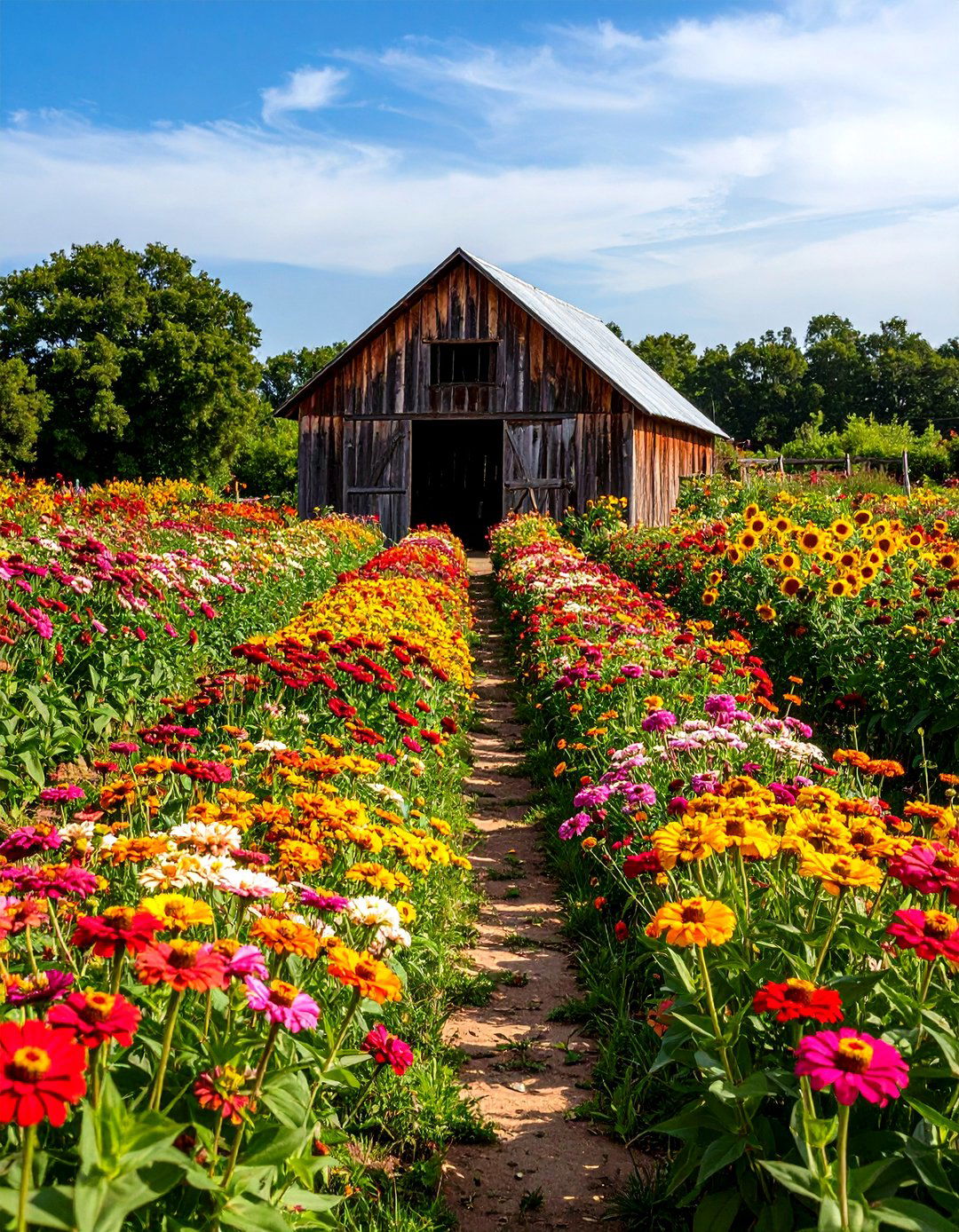
Design abundant flower displays with cutting garden rustic landscaping that provides continuous blooms for indoor arrangements throughout the growing season. Organize plantings in informal rows or blocks using heritage varieties of zinnias, cosmos, sunflowers, and other easy-care annuals that reseed naturally. Include native perennials like black-eyed Susans, purple coneflowers, and bee balm that return yearly while supporting local pollinator populations. Create practical access with grass or gravel pathways wide enough for wheelbarrows and harvesting baskets, and add weathered wooden supports for tall flowers prone to wind damage. Incorporate a rustic potting shed or work area constructed from reclaimed materials where you can process flowers, store tools, and start seedlings. Surround the cutting garden with informal borders of ornamental grasses and native shrubs that provide structure while allowing the flower garden to remain the seasonal star of this productive and beautiful landscape feature.
Conclusion:
Rustic landscaping offers an authentic approach to outdoor design that celebrates natural beauty while requiring minimal maintenance. These twenty ideas demonstrate how weathered materials, native plants, and informal design principles can transform any space into a charming retreat. By embracing imperfection and working with natural processes rather than against them, rustic landscapes create environments that improve with age and provide lasting value. Whether you choose wildflower meadows, reclaimed wood features, or natural stone elements, the key lies in selecting approaches that reflect your region's character while supporting local ecosystems and wildlife.


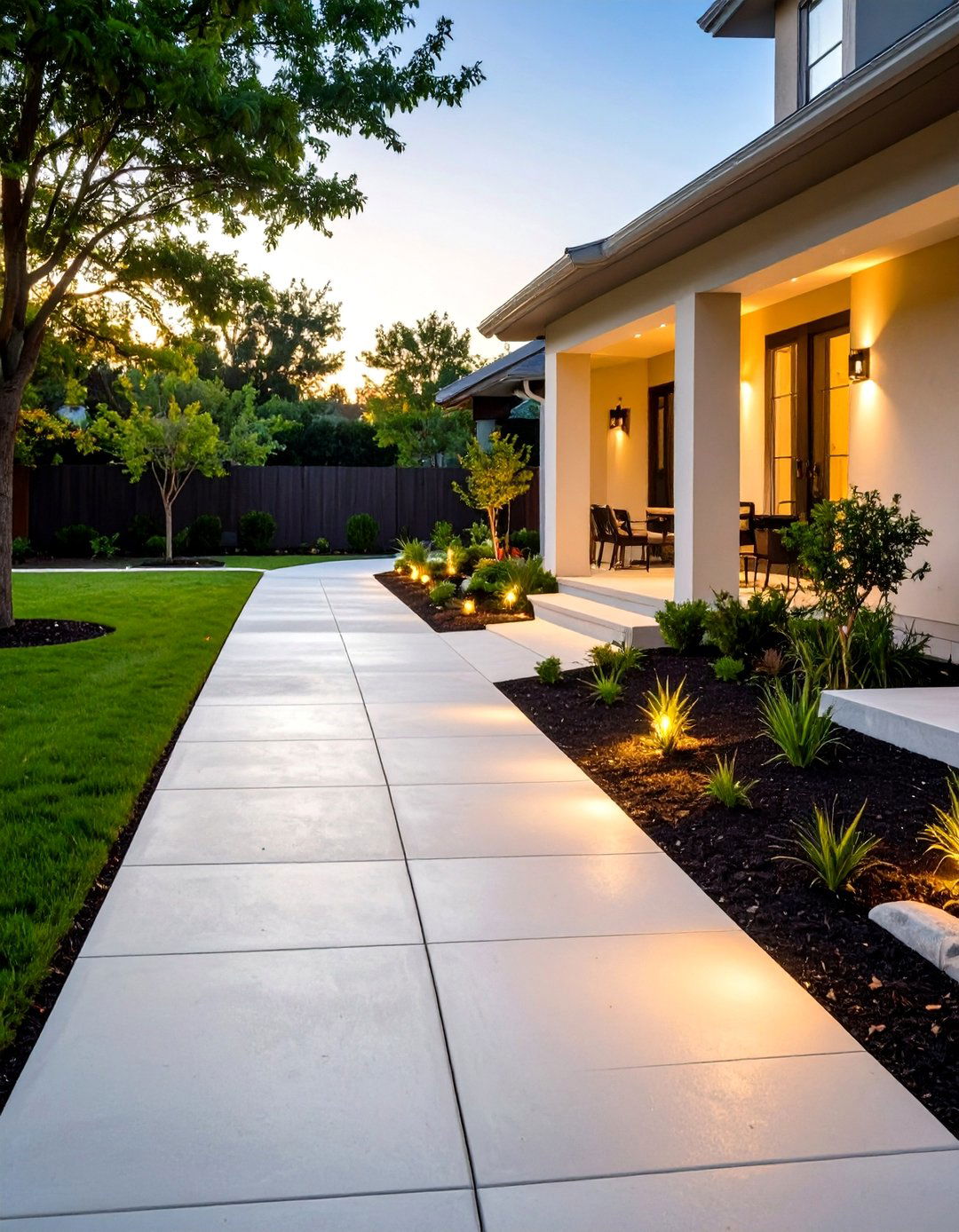


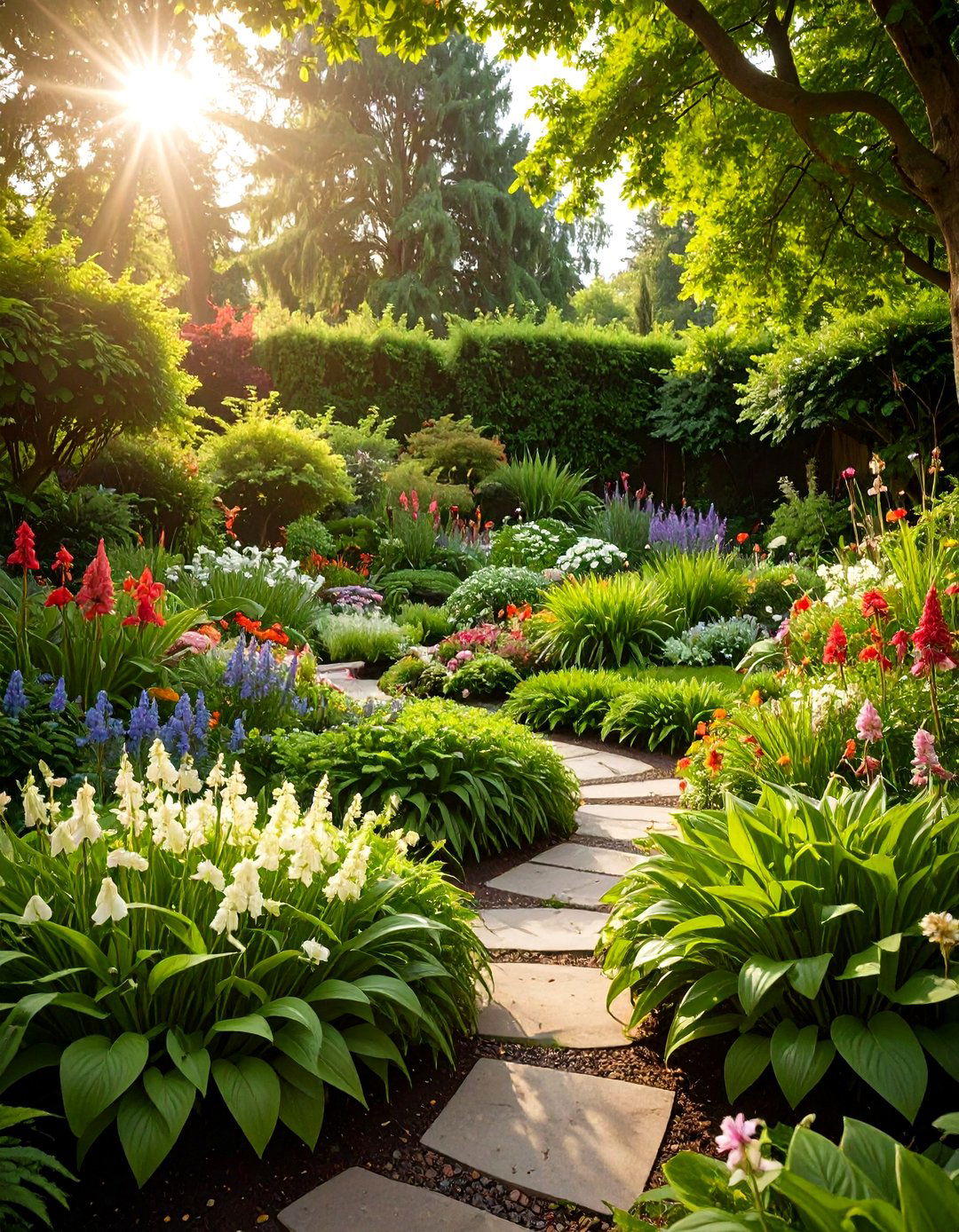
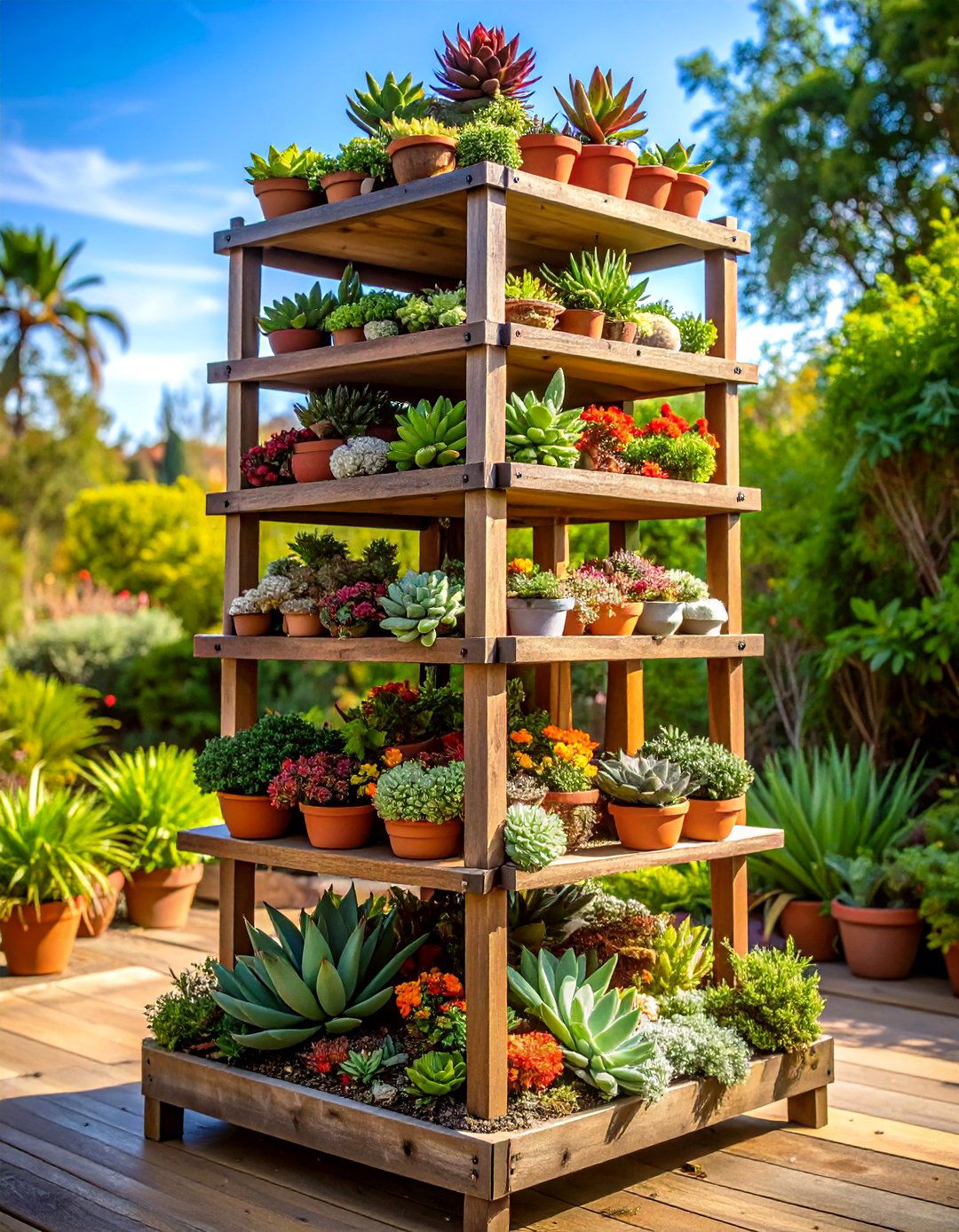
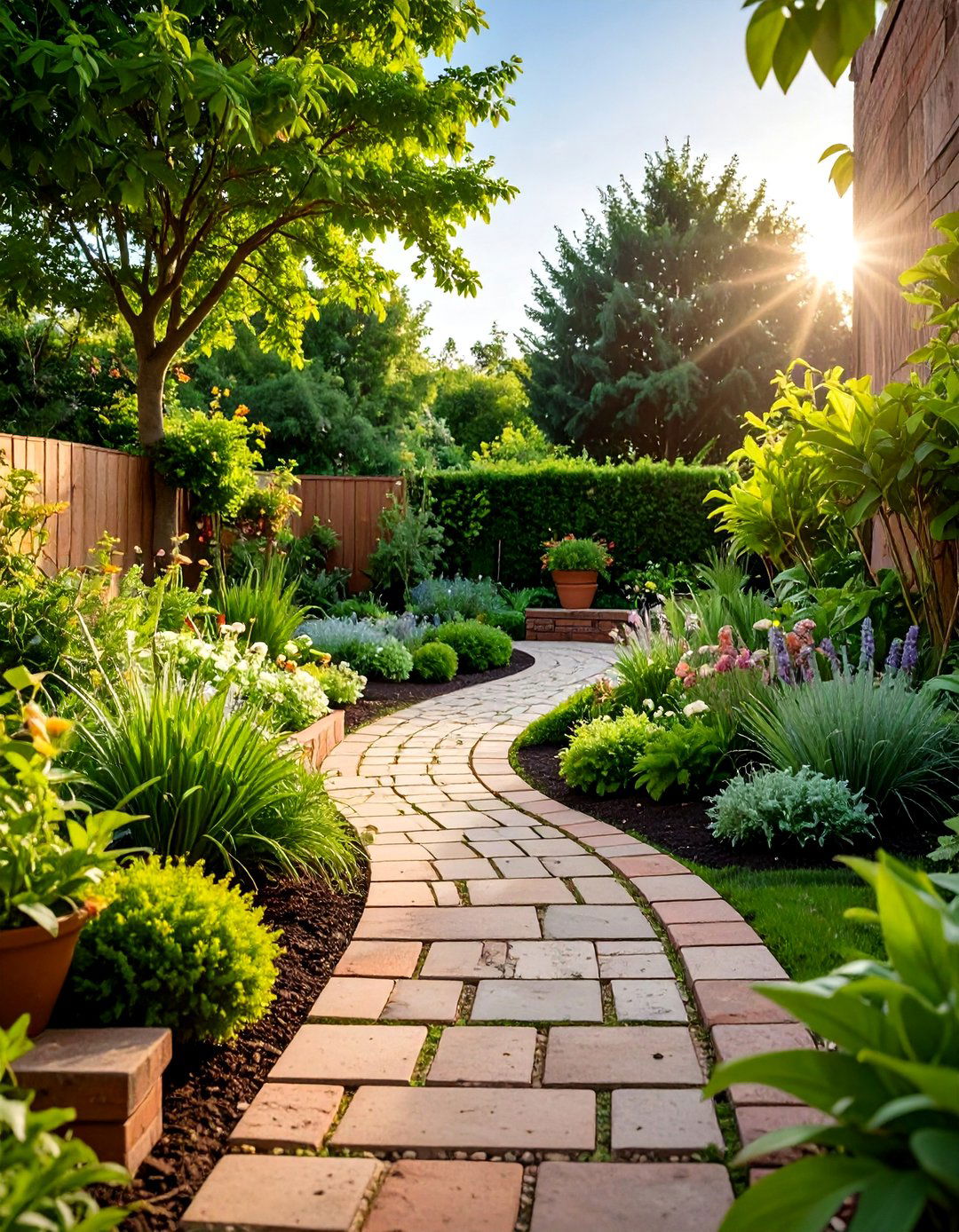
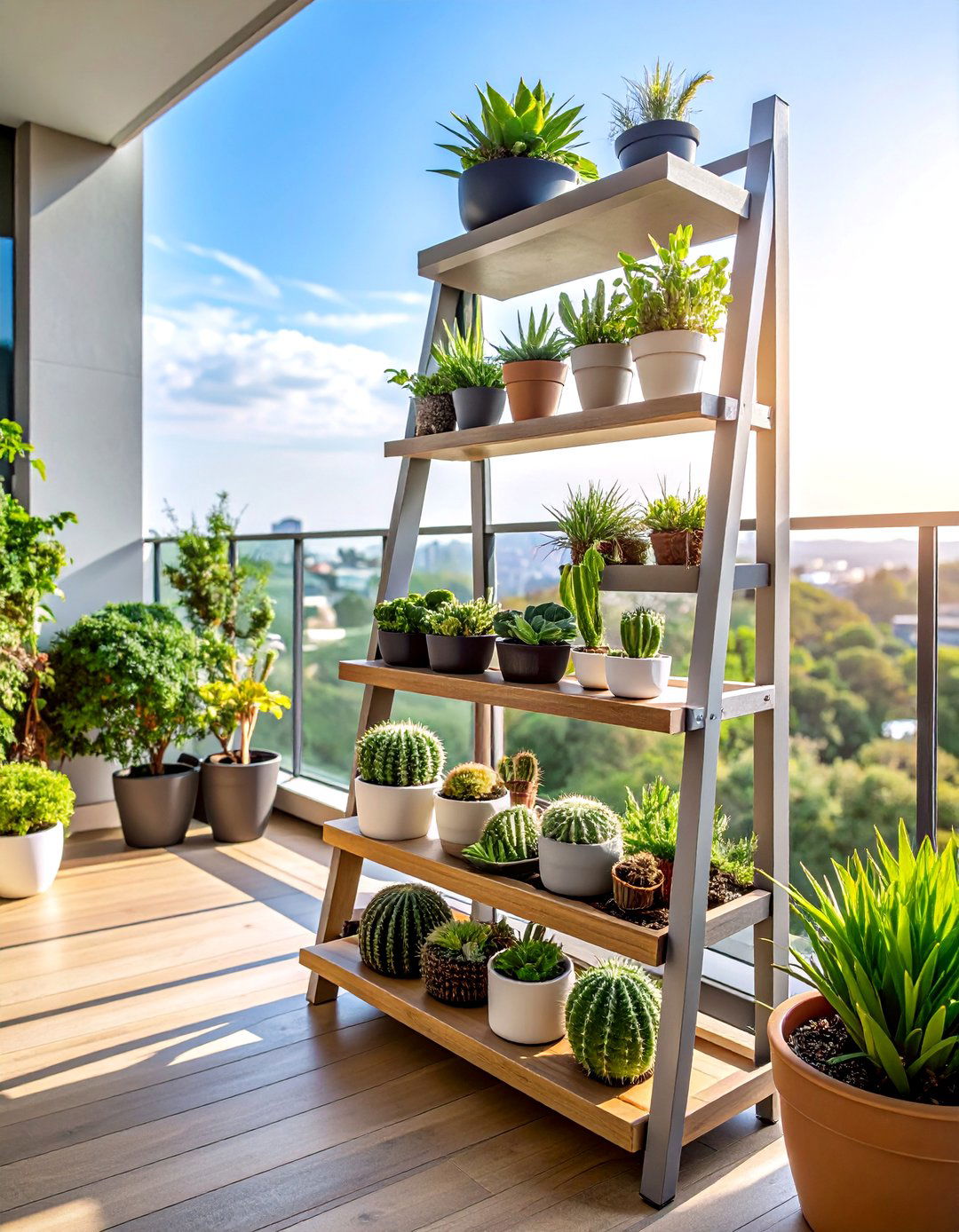
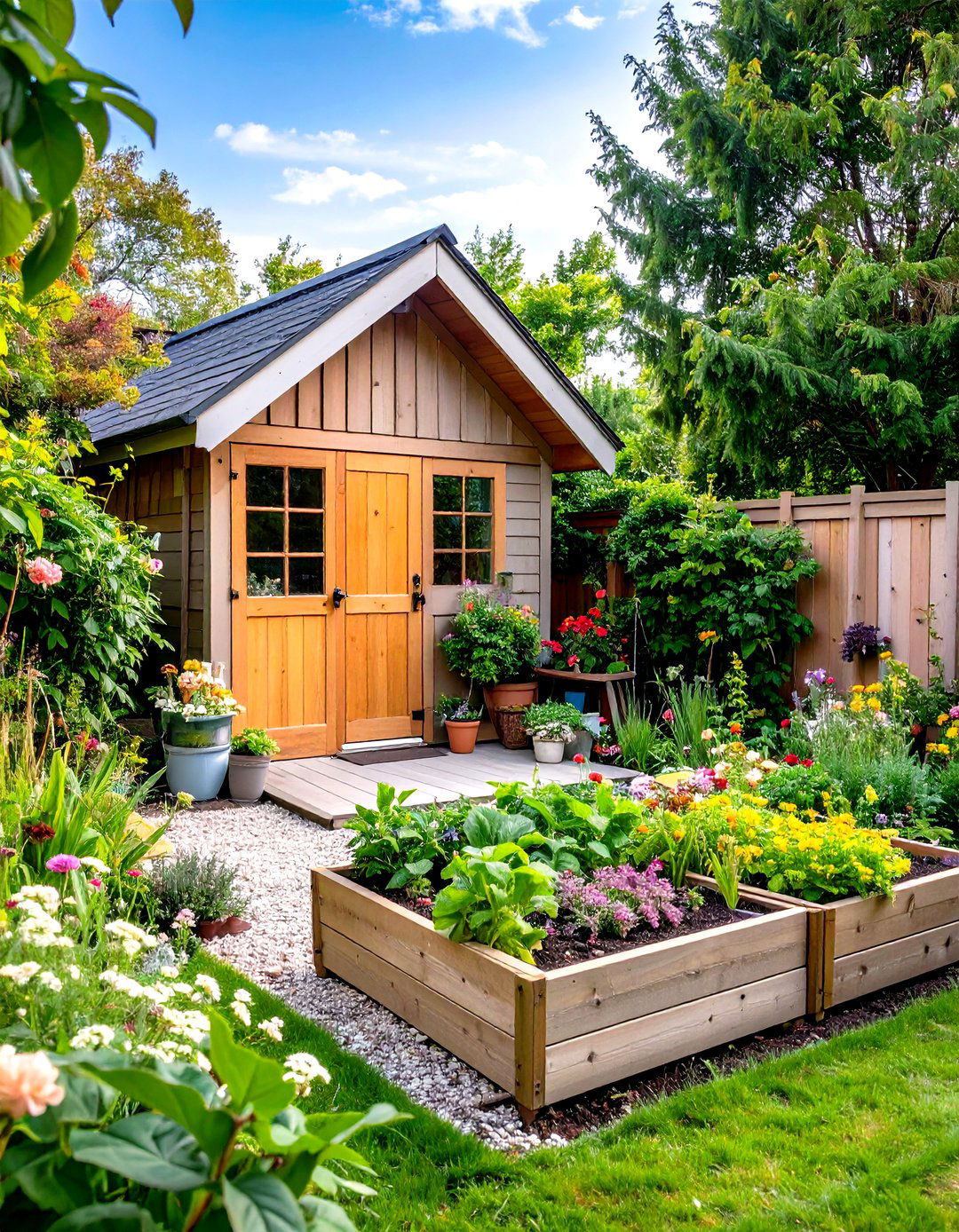
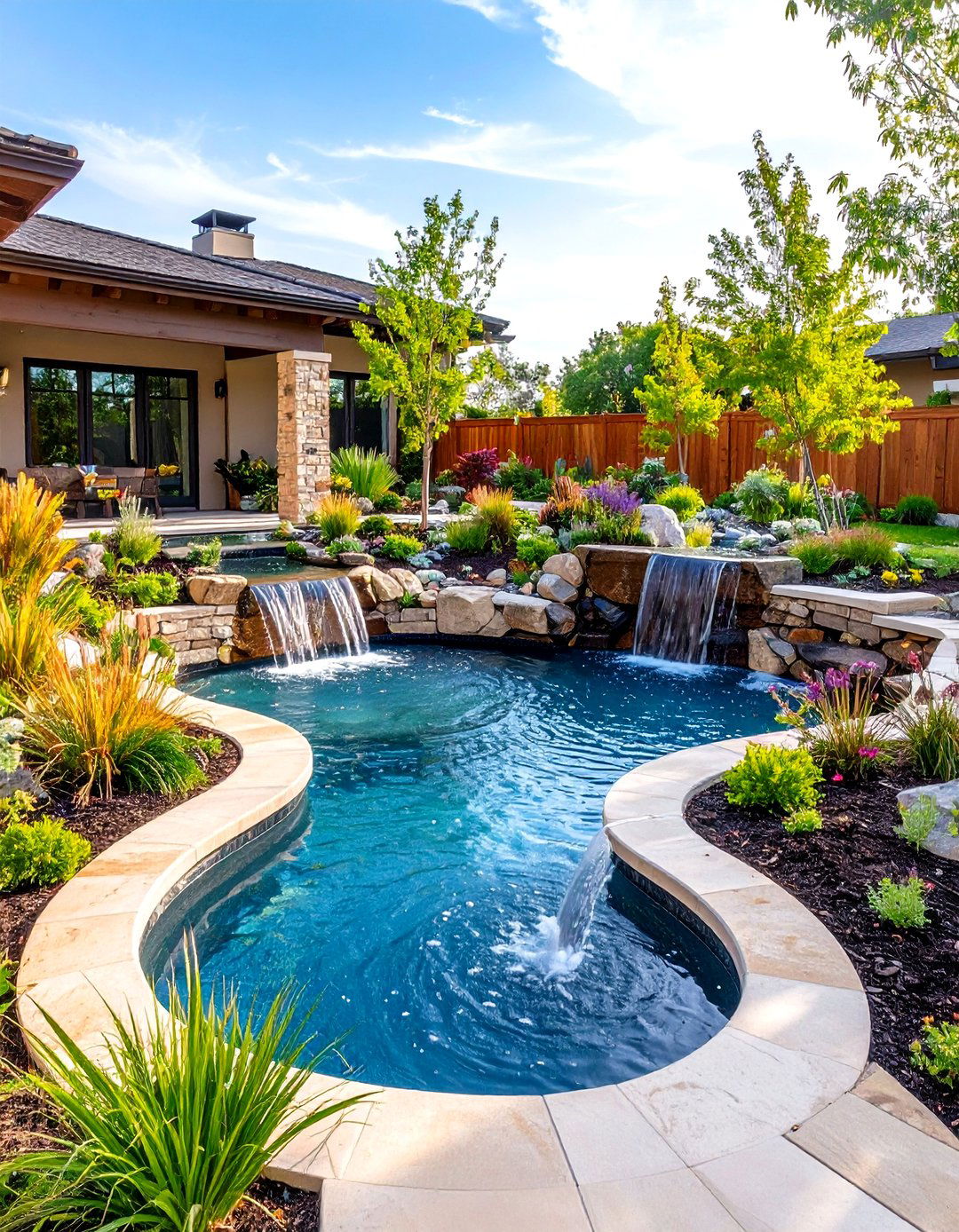
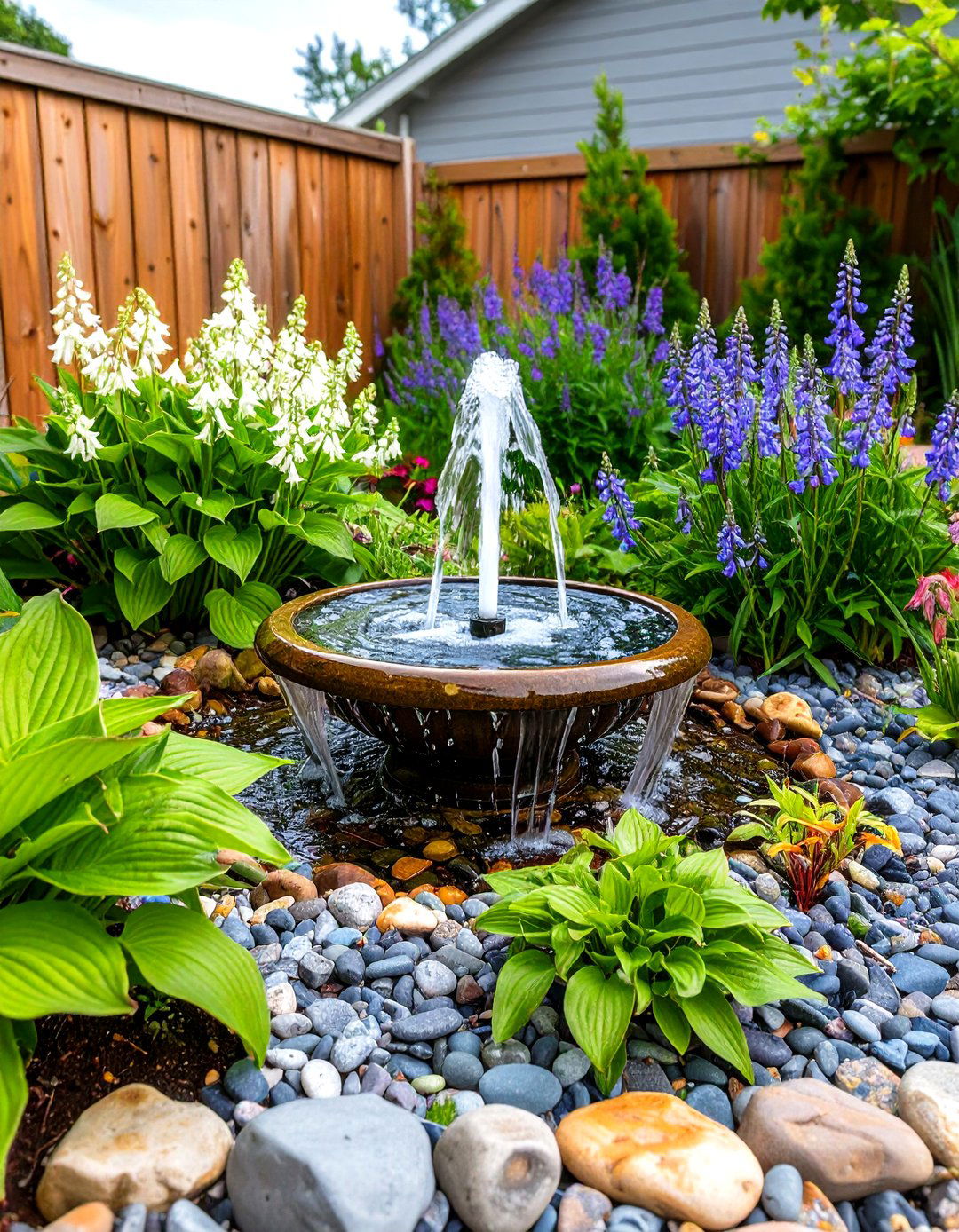


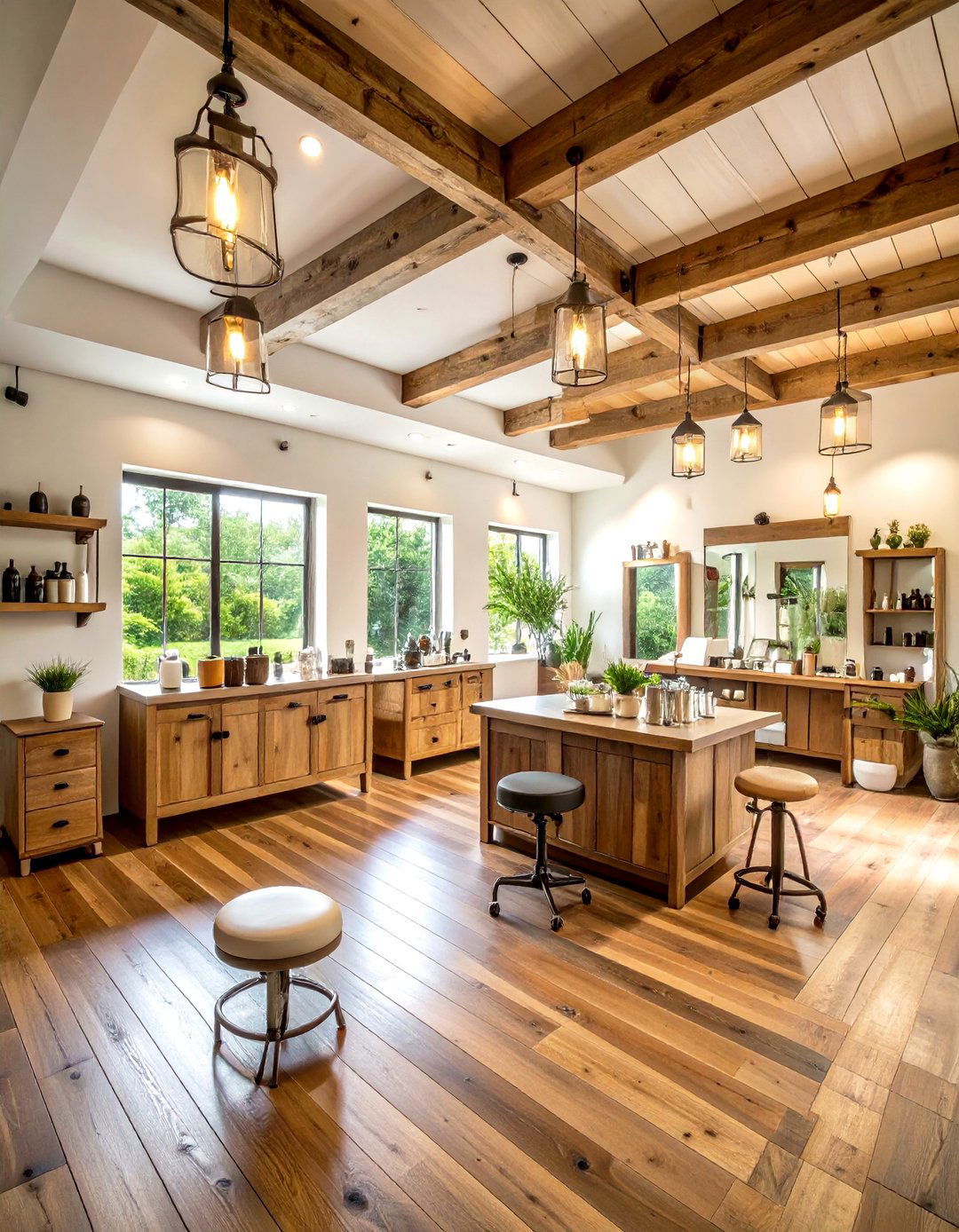

Leave a Reply